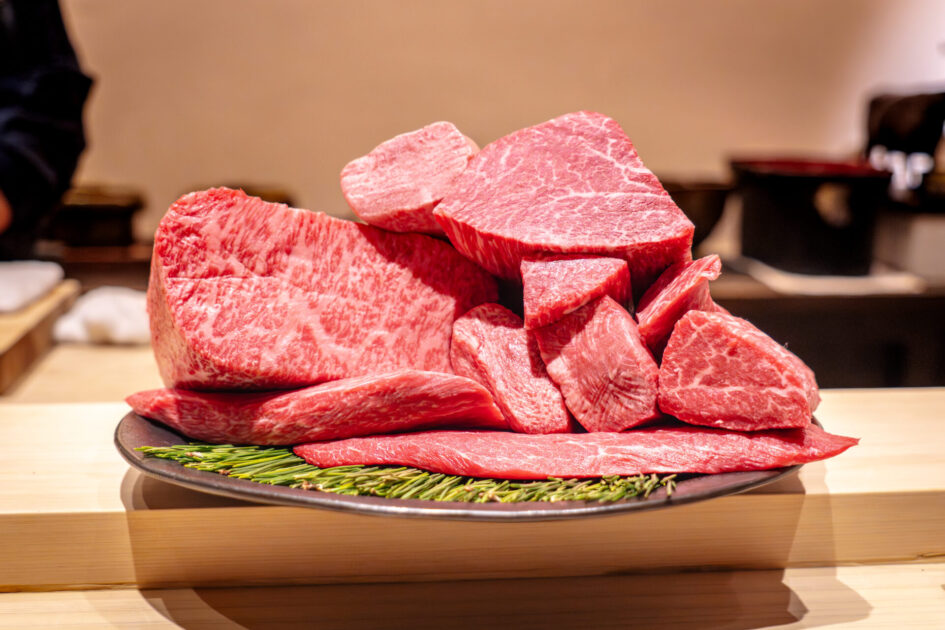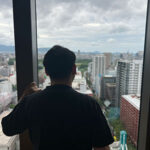CONTENTS
About Uramatsu
Concept
Quietly tucked away in a tranquil residential neighborhood of Nishi-Azabu, Tokyo, stands Ushimatsu.
I had long heard whispers about this restaurant—how it gently redefines what we think we know about yakiniku.
They purchase whole virgin female Tajima-breed black wagyu cattle and bring out the fullest expression of each ingredient through careful cutting, precise grilling, and thoughtful pairings of salt, tare, and miso—with wine to match.
The entire dining experience is designed to engage all five senses of the guest, creating something more than just “delicious”—it becomes a memory.
And this time, I was heading even deeper into its core—to Uramatsu, the hidden counter of just seven seats, nestled beneath Ushimatsu itself.
This exclusive space opens only four days a week, where Executive Chef Tatsuro Hirakubo stands before the guests, grilling, plating, and storytelling in real time.
What cuts of meat would appear at this special counter, where the origin of each ingredient and the details of its preparation are conveyed directly through the chef’s words?
What sort of structure would this yakiniku course unfold with?
It was finally time to experience with my own senses the “temperature” that could never be captured through mere photos or word-of-mouth.
My heart grew warm with anticipation, even before tasting a single bite.
A moment that can only be lived here was about to begin.
A Theater of Meat by Executive Chef Tatsuro Hirakubo
At the helm of Ushimatsu is Executive Chef Tatsuro Hirakubo, a rare talent who orchestrates an entire yakiniku course—fire, structure, presentation—like a theatrical performance.
He is the mastermind behind what has come to be known as a “theater of meat.”
The most talked-about expression of his philosophy is Uramatsu, the exclusive, reservation-only counter open just four days a week.
In this intimate seven-seat space, Hirakubo personally handles everything—from breaking down offal and performing meticulous preparations, to grilling and final plating.
Employing delicate techniques like kelp curing and hot water blanching, he brings out the ideal character of each exceptionally fresh cut of meat.
It’s craftsmanship in its purest form.
His graceful movements, deep knowledge, and warm, well-timed communication create a dining experience that transcends traditional yakiniku—a truly “live” culinary performance.
Beneath the mastery lies not only technique, but a deep reverence and passion for the ingredients.
His earnest attention to each plate is what elevates Ushimatsu into something one-of-a-kind.
Restaurant Recognition
Ushimatsu continues to pursue a vision of yakiniku that goes beyond simply “tasting good,” earning devoted fans among industry professionals and gourmets alike.
In 2022, it received the Bronze medal in the Tabelog Awards,
and has been selected for five consecutive years (2020–2024) in the Yakiniku Tokyo Top 100 Restaurants—a curated list of Tokyo’s best yakiniku establishments.
Praises abound in reviews:
“One of the finest sourcing operations in Tokyo,”
“Exceptional grilling technique,”
“Beautifully composed course.”
Despite the difficulty of securing a reservation, the number of repeat guests continues to grow.
Rather than flash or trend, it’s the accumulation of deeply satisfying, authentic experiences that has earned Ushimatsu its reputation.
It’s no exaggeration to say this restaurant is one of the most important and accomplished destinations in the world of modern yakiniku today.

Dining Prelude
Exterior & Entrance
Beyond the door, a story begins to unfold.
A noren curtain bearing a crest-like logo floats against unbleached fabric—silent yet dignified—gently separating the guest from their daily life.
This is Ushimatsu, quietly situated in a peaceful corner of Nishi-Azabu.
Follow the softly curving stairs that descend into the basement, and you’ll arrive at the main restaurant, Ushimatsu.
But even deeper within lies something more concealed—Uramatsu, a seven-seat counter hidden behind a secret door.
Thick walls and subdued lighting guide you inward, where tension and excitement subtly intertwine.
Before a single word is spoken, the space itself announces that this is the inner sanctum of yakiniku.
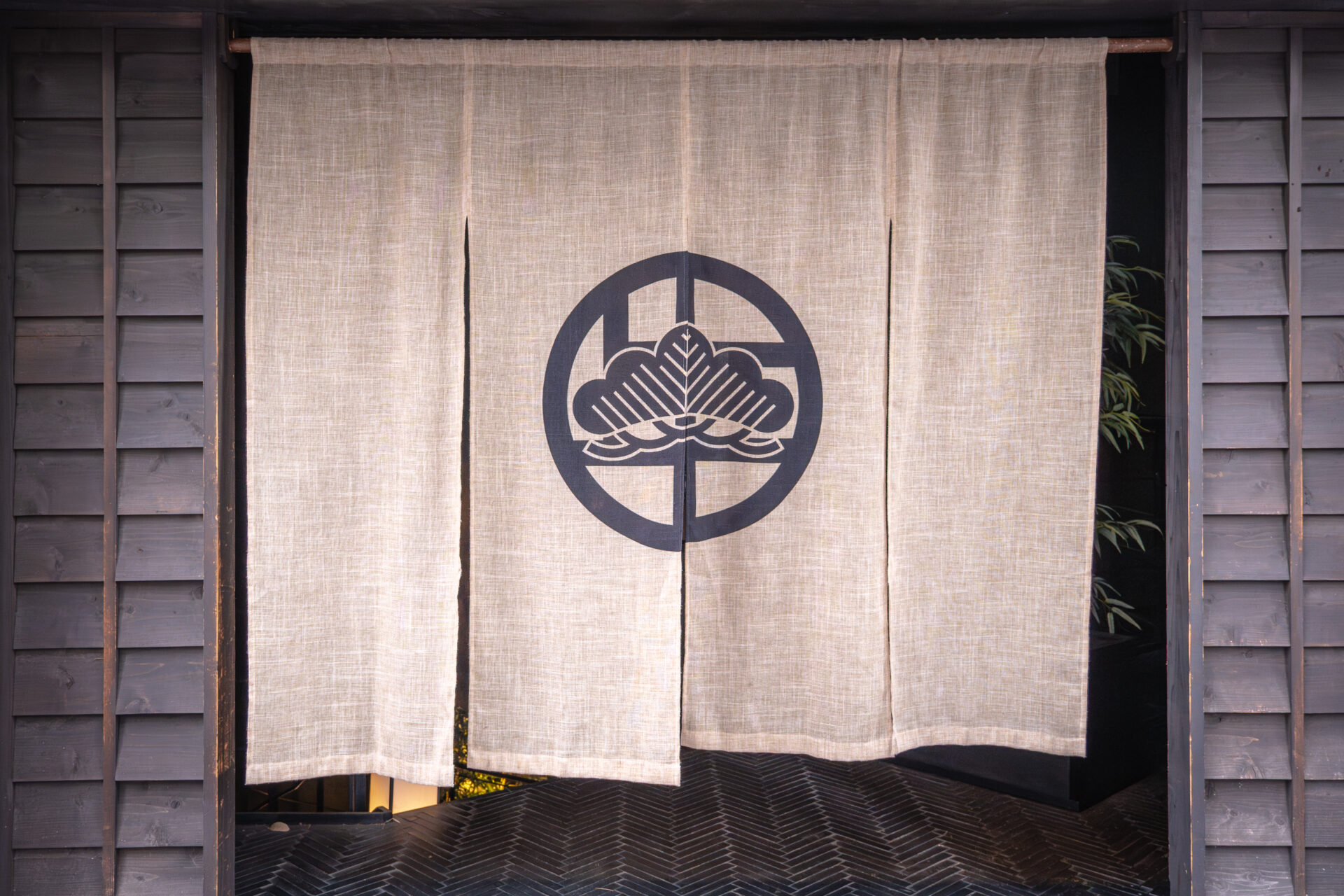
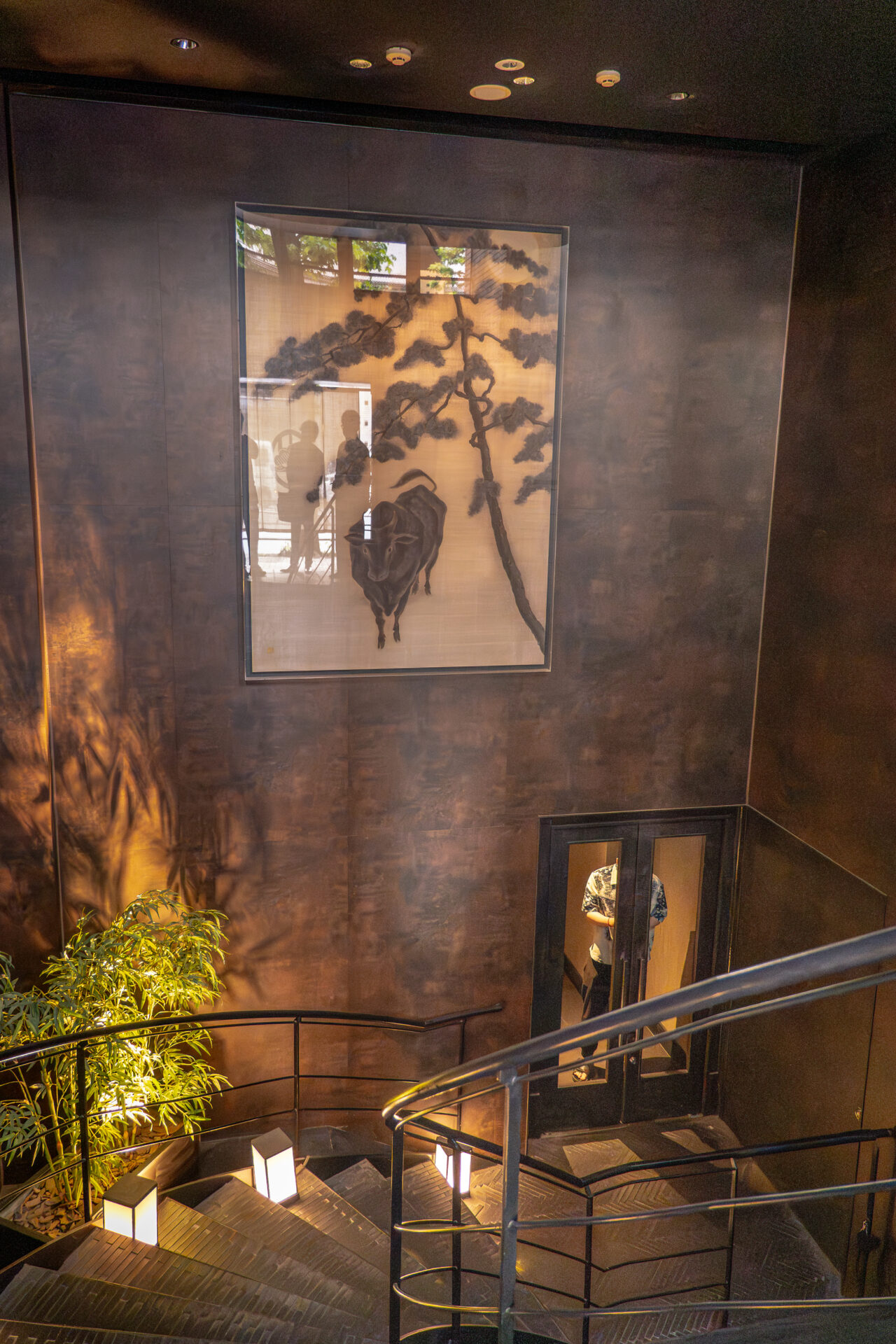
Dining Space
The dining area at Uramatsu consists of a single solid wood counter with just seven seats.
Soft lighting envelops the space, which is stripped of all excess, filled instead with serene minimalism.
In front of each guest is the grill and cutting station—
This is where Executive Chef Tatsuro Hirakubo prepares each dish with care.
The proximity to the “stage” where the food is created is strikingly intimate, and every move of the chef heightens the guest’s sense of anticipation and awe.
Once seated, you’re welcomed by a meticulously arranged tray: elegant chopsticks, a spoon, a hand towel, and that day’s course menu—all laid out on a heavy wooden board.
Even a printed guide on “how to enjoy the meat” is included, marking the beginning of a culinary ritual that goes beyond eating—it’s an experience in itself.
The air is so focused, conversations naturally quiet down to whispers.
This is a place where the very concept of “yakiniku” is being redefined, one detail at a time.
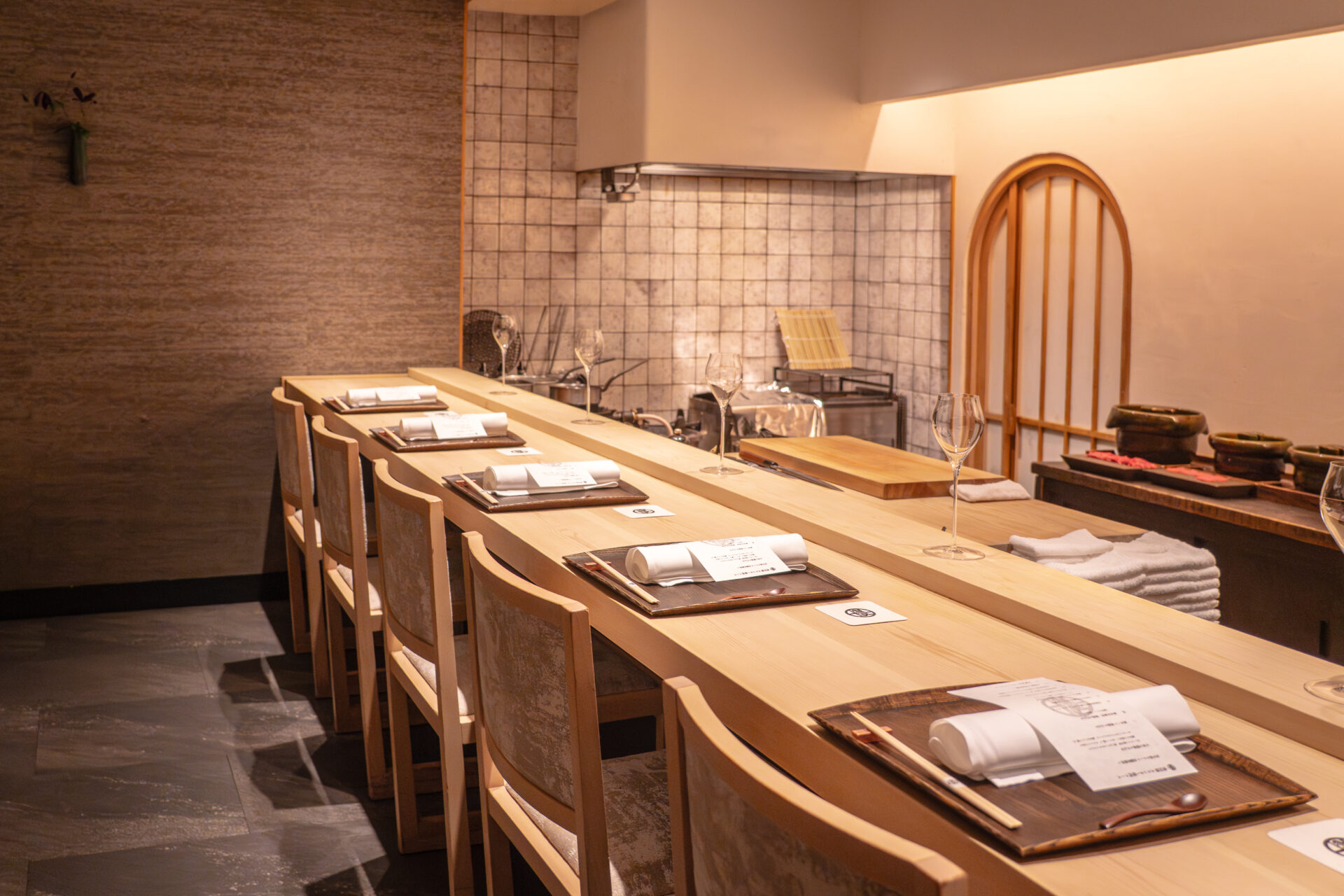
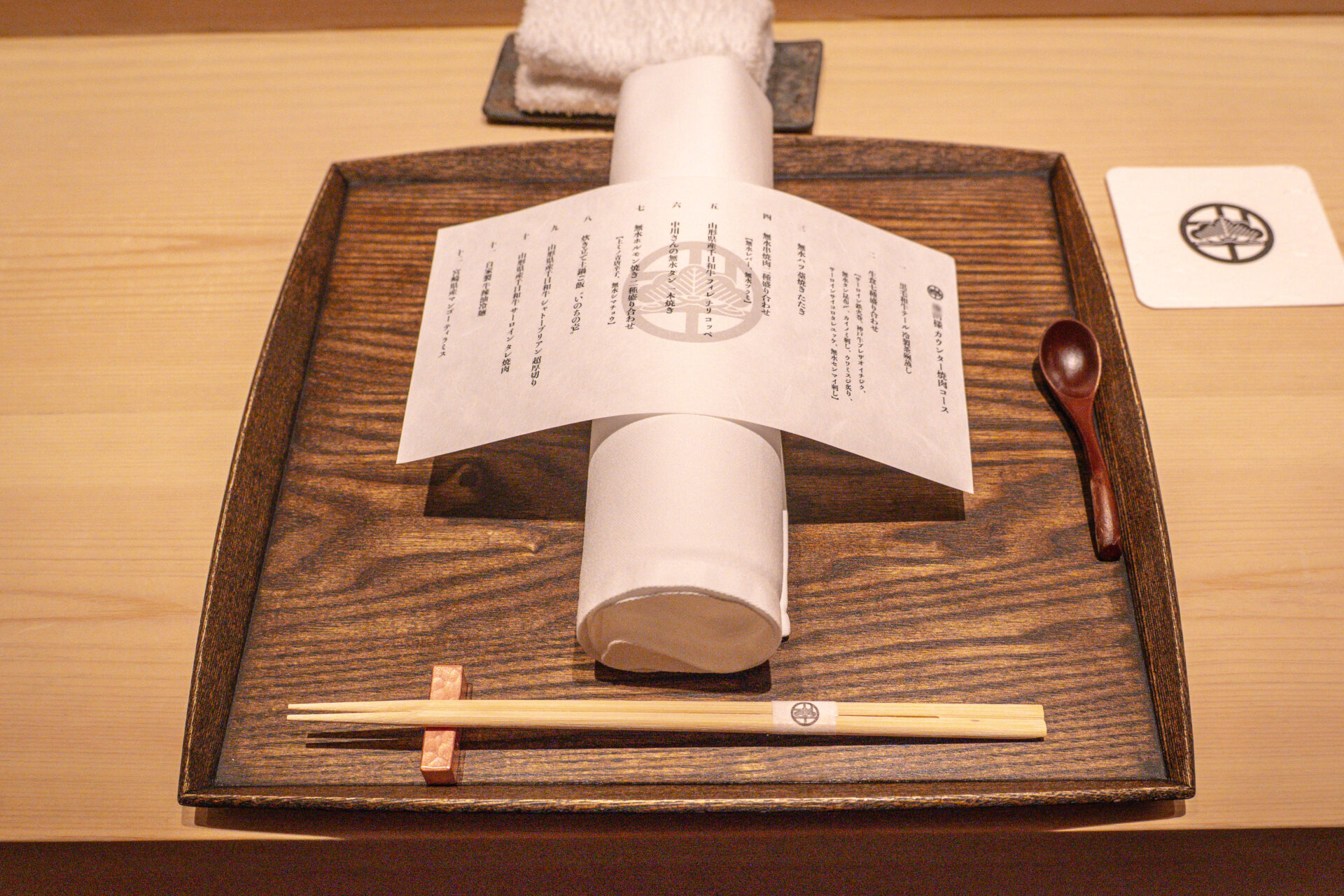
Menu Presentation
Upon sitting down, the first item presented is the day’s course menu, beautifully arranged on a wooden tray.
This particular meal consisted of 11 dishes in total, beginning with a cold chawanmushi and moving through raw beef, offal, lean cuts, grilled items, rice, noodles, and dessert.
Each item is clearly listed on the paper menu, immediately drawing the guest into a world of culinary storytelling.
Accompanying the menu is a presentation of the meat itself, along with its certification of origin.
That day’s featured beef was “Sennichi Wagyu” from Saito Livestock in Kahoku Town, Yamagata Prefecture—a rare breed of pure Tajima-bloodline heifers raised for over 1,000 days, with only 80–100 cattle shipped per year.
Then, across the counter, come the day’s featured cuts—each beautifully sliced and presented with weight and presence: tongue, sirloin, chateaubriand, upper misuji.
Their color and luster are breathtaking, evoking a collective breath held just before the curtain rises on a grand stage.
This opening—explaining the story behind each ingredient—deepens the experience, anchoring it in meaning and memory.
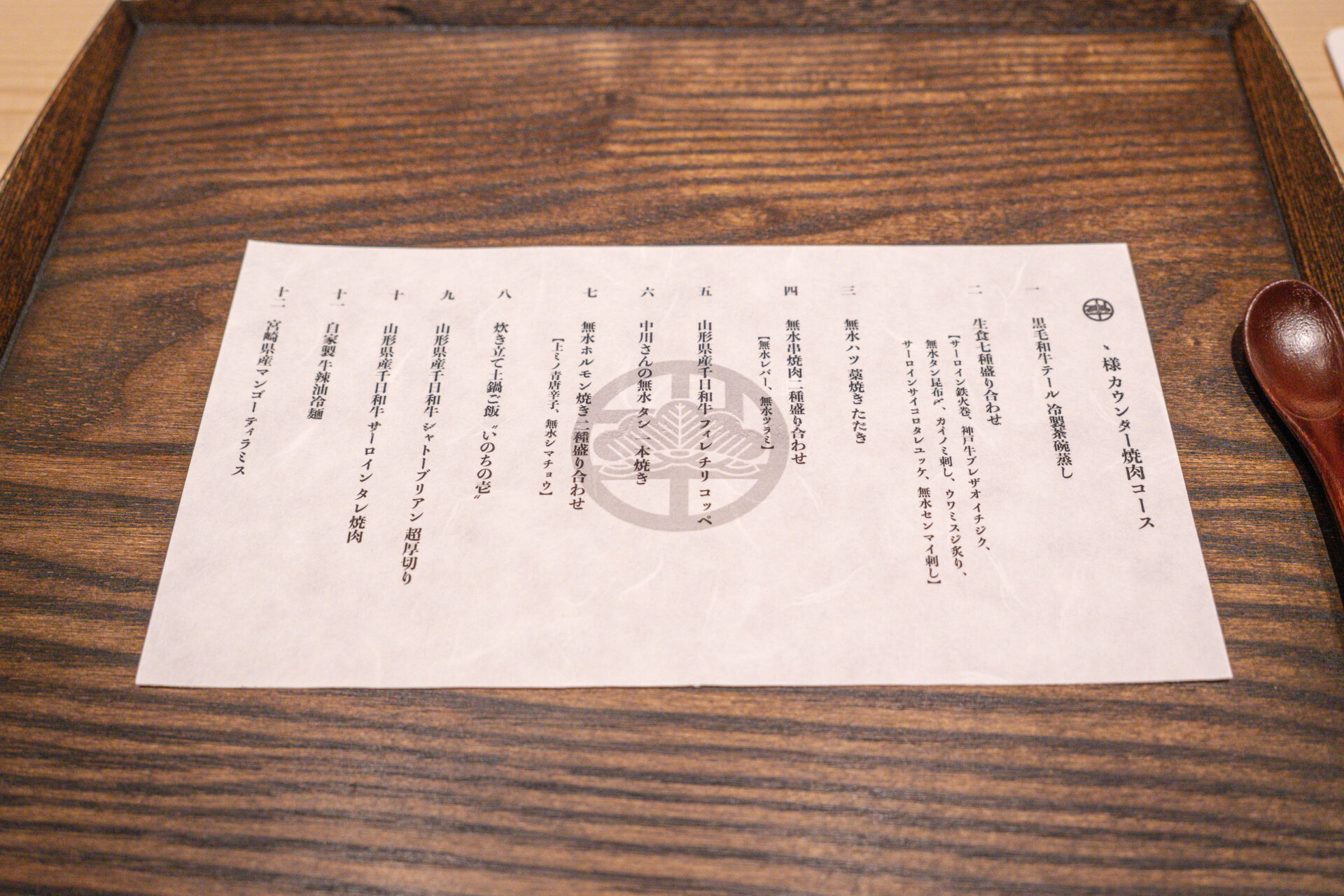
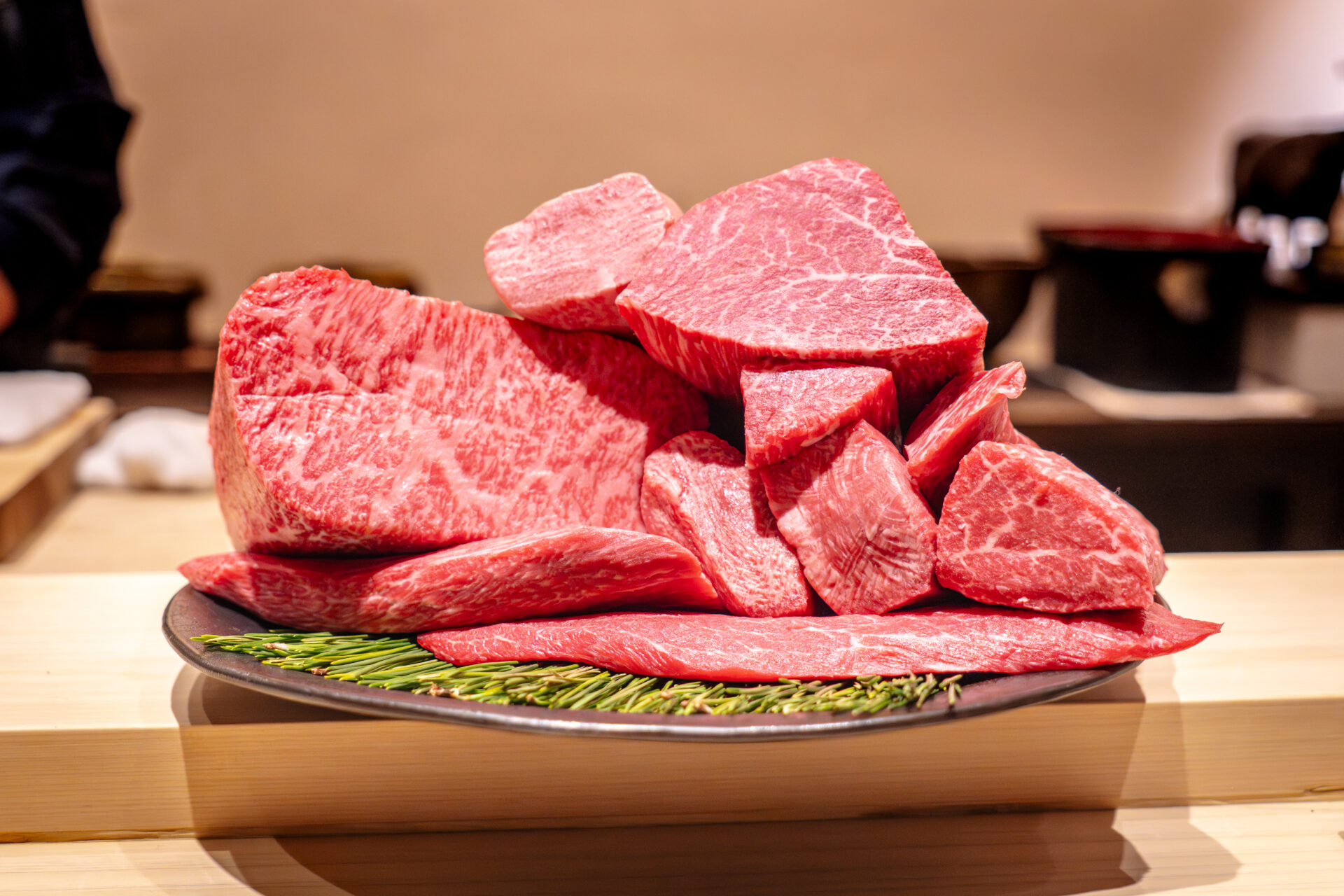
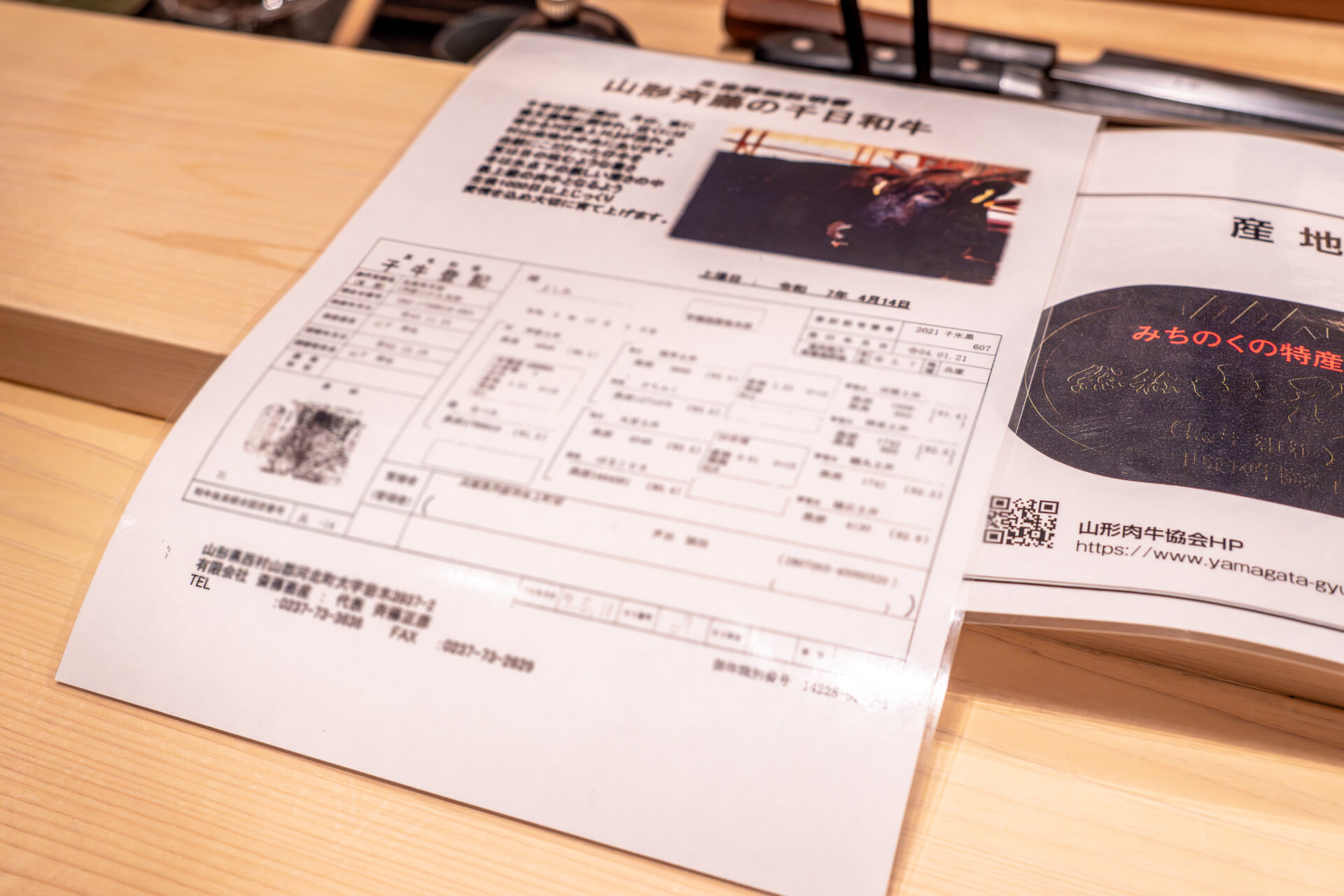
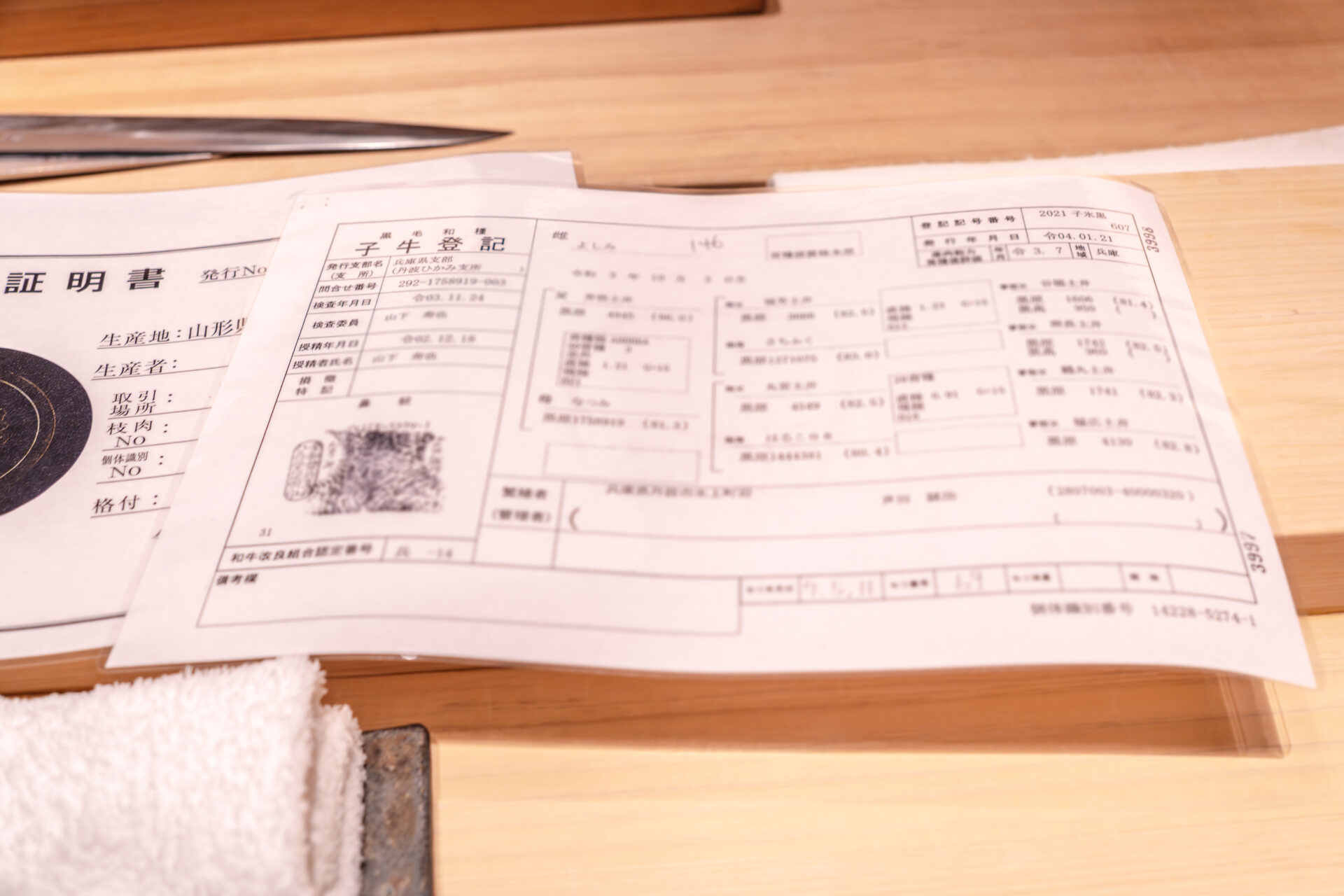
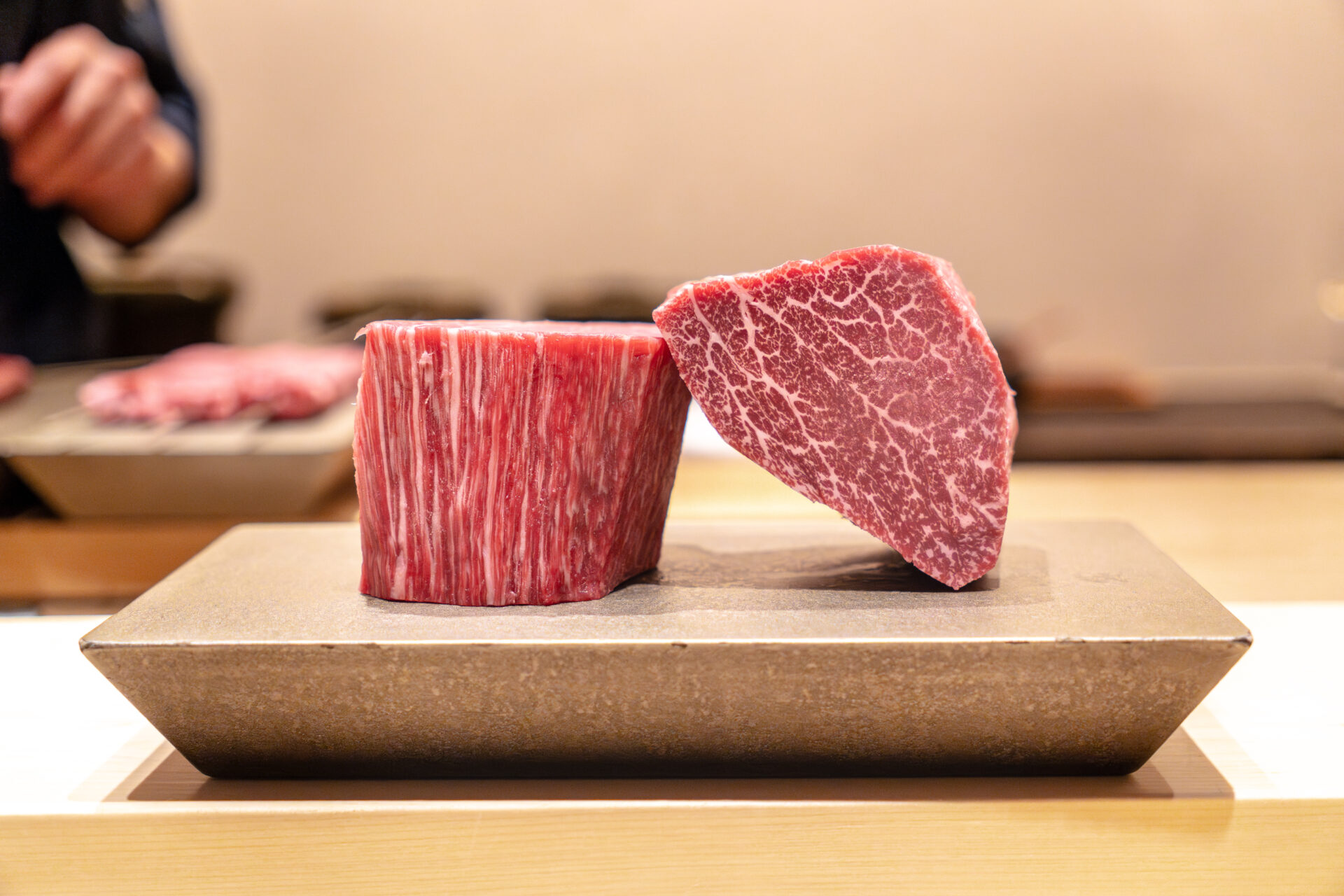
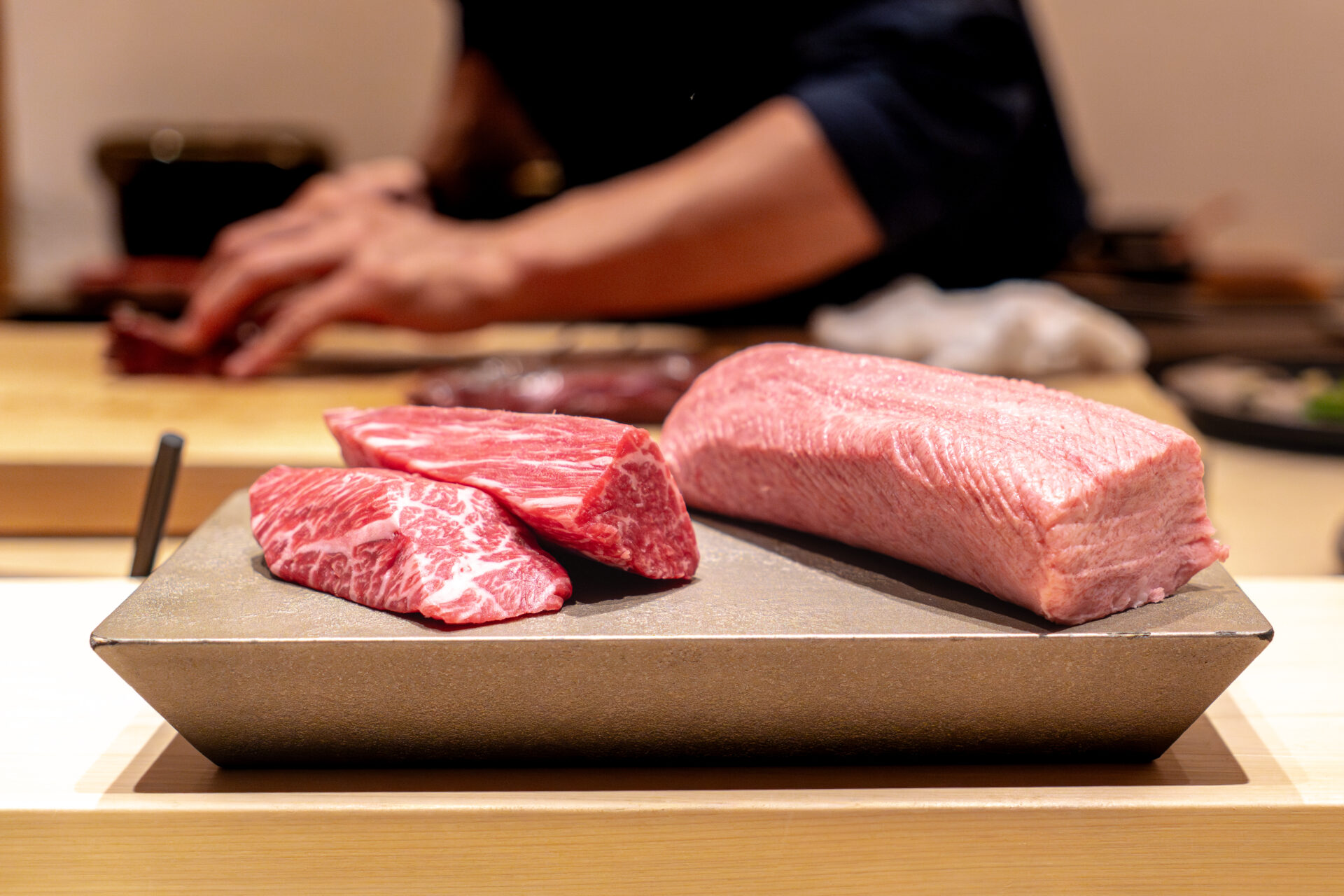
Dishes Tasted
Cold Chawanmushi with Black Wagyu Oxtail
The meal began with a chilled chawanmushi.
Made with a clear oxtail broth, the dish was clean and refined, free from excessive fat yet gently infused with the umami of beef.
Its cool texture and subtle aroma of meat made it a dignified overture to the course.
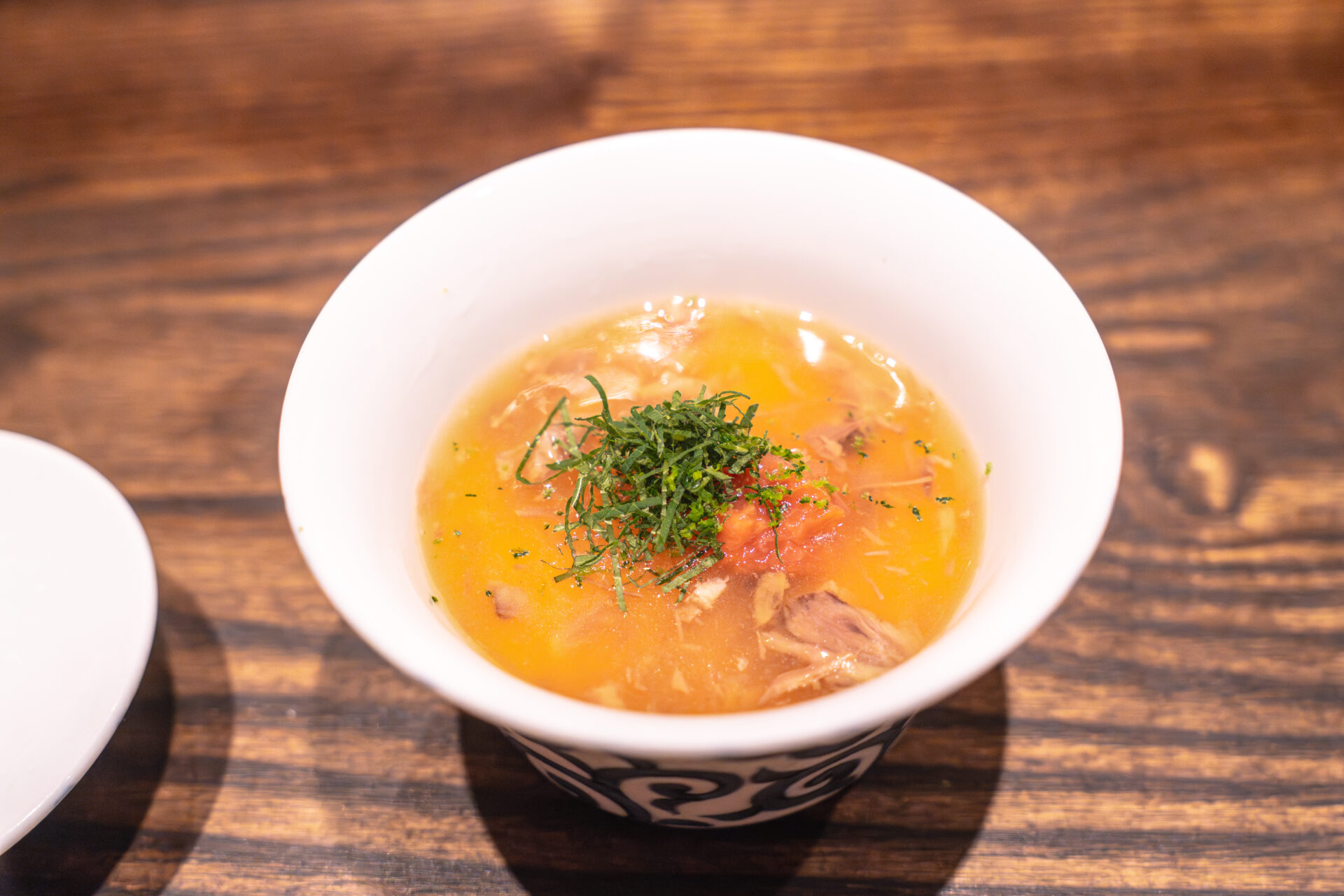
Assortment of Seven Raw Beef Preparations
Next came a stunning platter of seven raw beef items.
At the center: a decadent tekka-maki roll made with Sennichi Wagyu chateaubriand and sirloin.
Surrounding it were rare and precisely prepared delicacies:
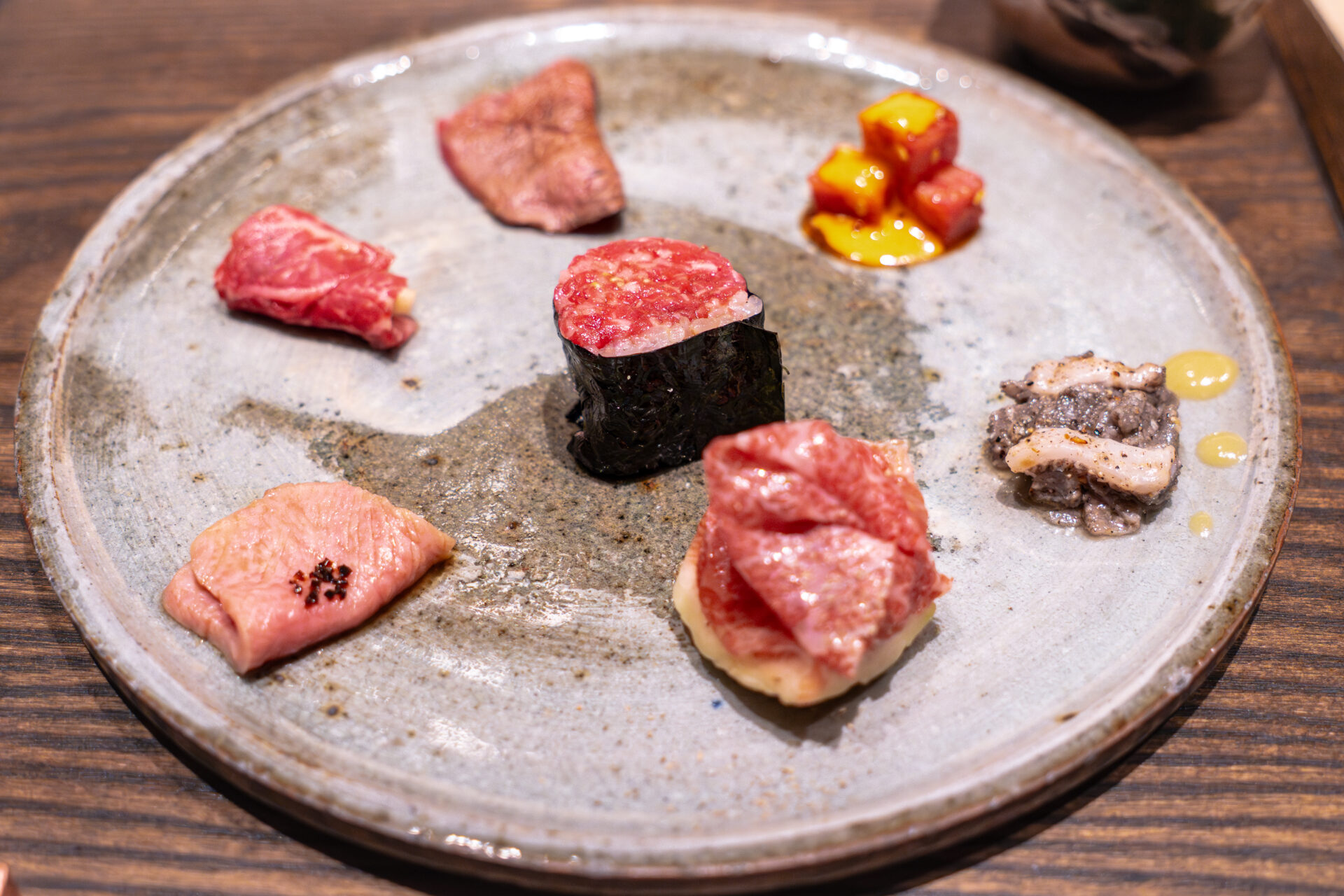
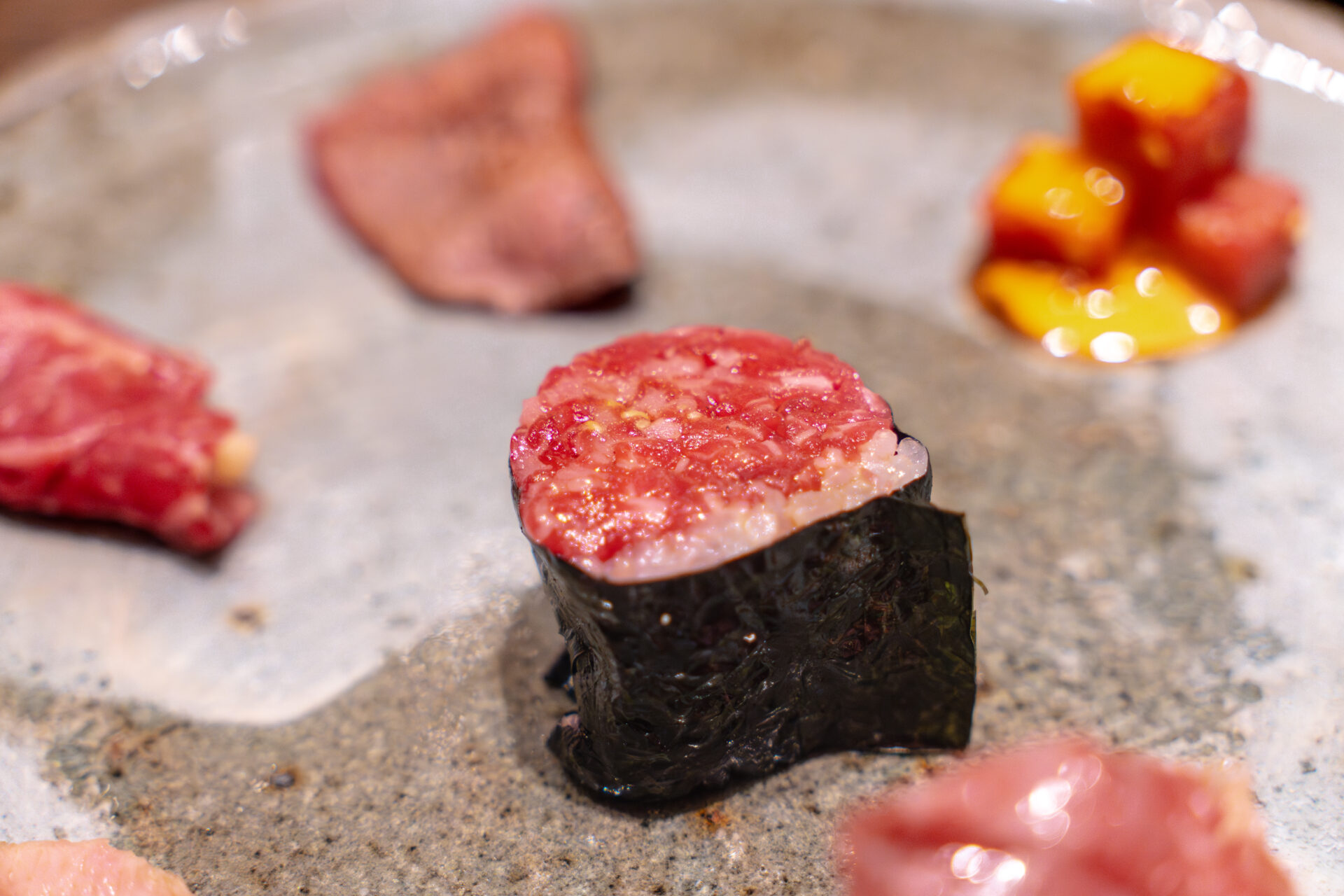
-
Kobe beef bresaola, made by the only person in Japan with the skills to produce it
-
Raw tongue, cut for optimal texture
-
Kai-no-mi sashimi from Sennichi Wagyu
-
Upper misuji (shoulder blade), lightly seared for fragrance
-
Sirloin yukhoe, diced into cubes and bursting with rich, sweet flavor
-
Senmai (omasum) sashimi, served refreshingly with vinegared miso
Each item showcased a meticulous balance of temperature, slicing, and seasoning—an expression of raw beef artistry.
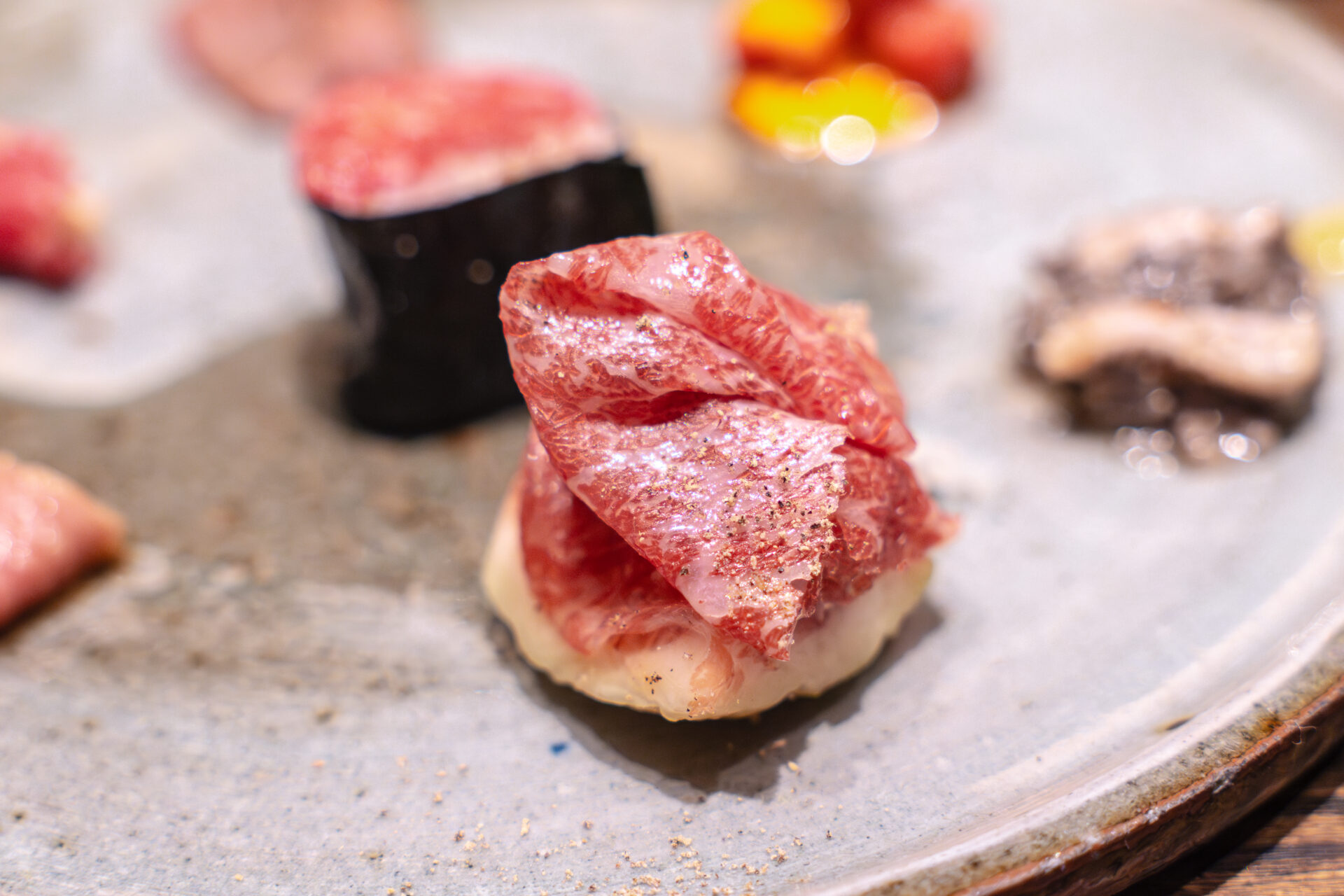
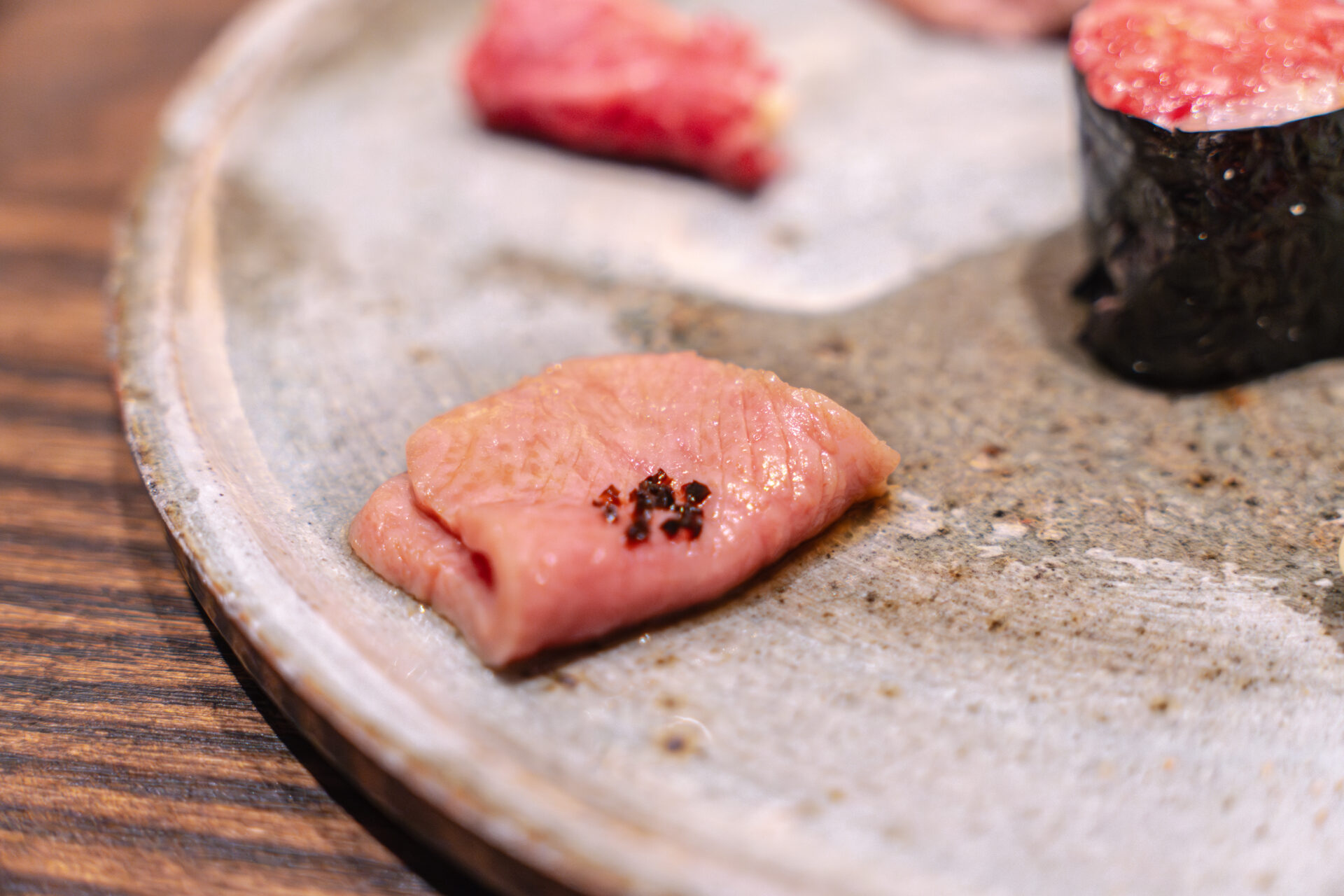
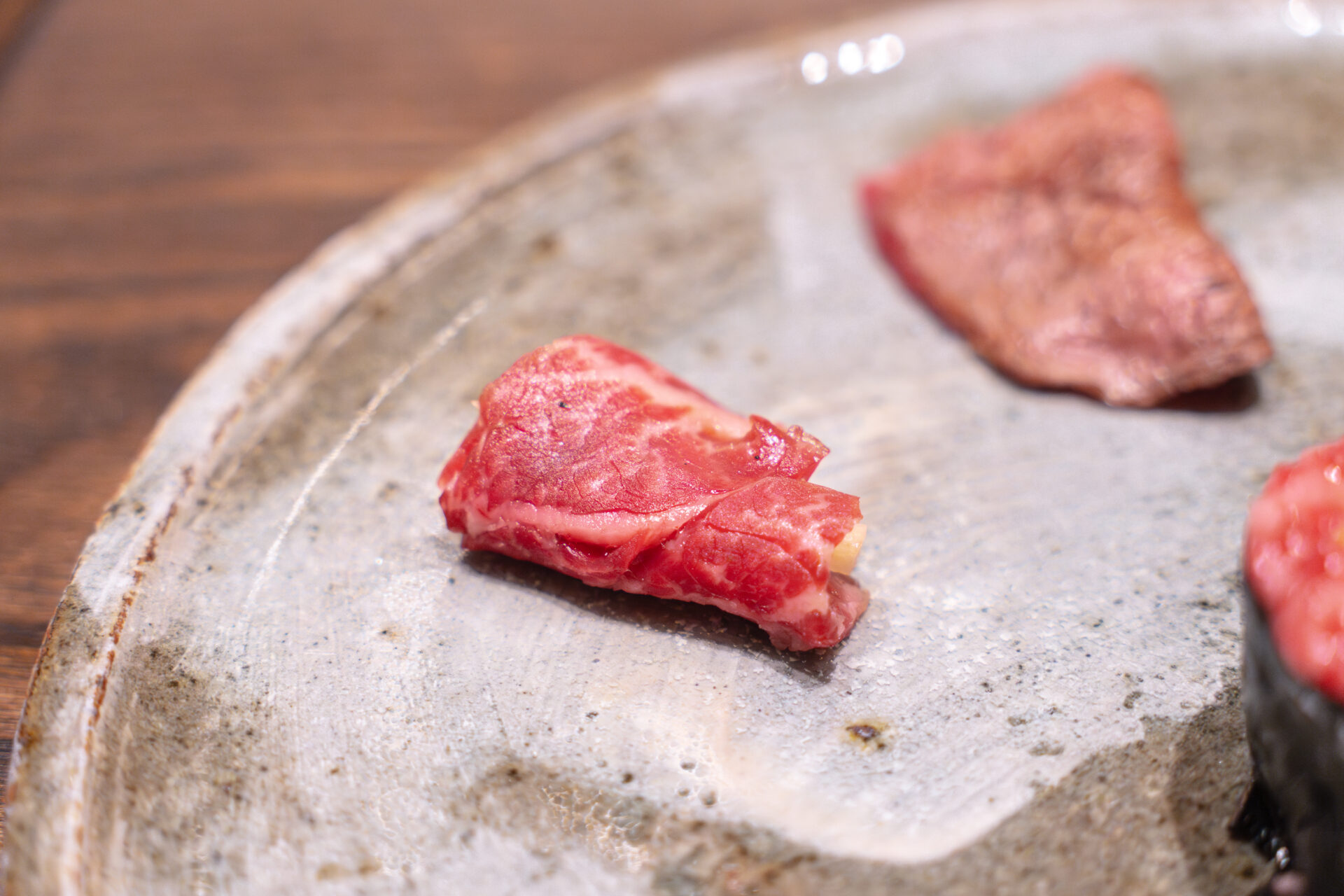
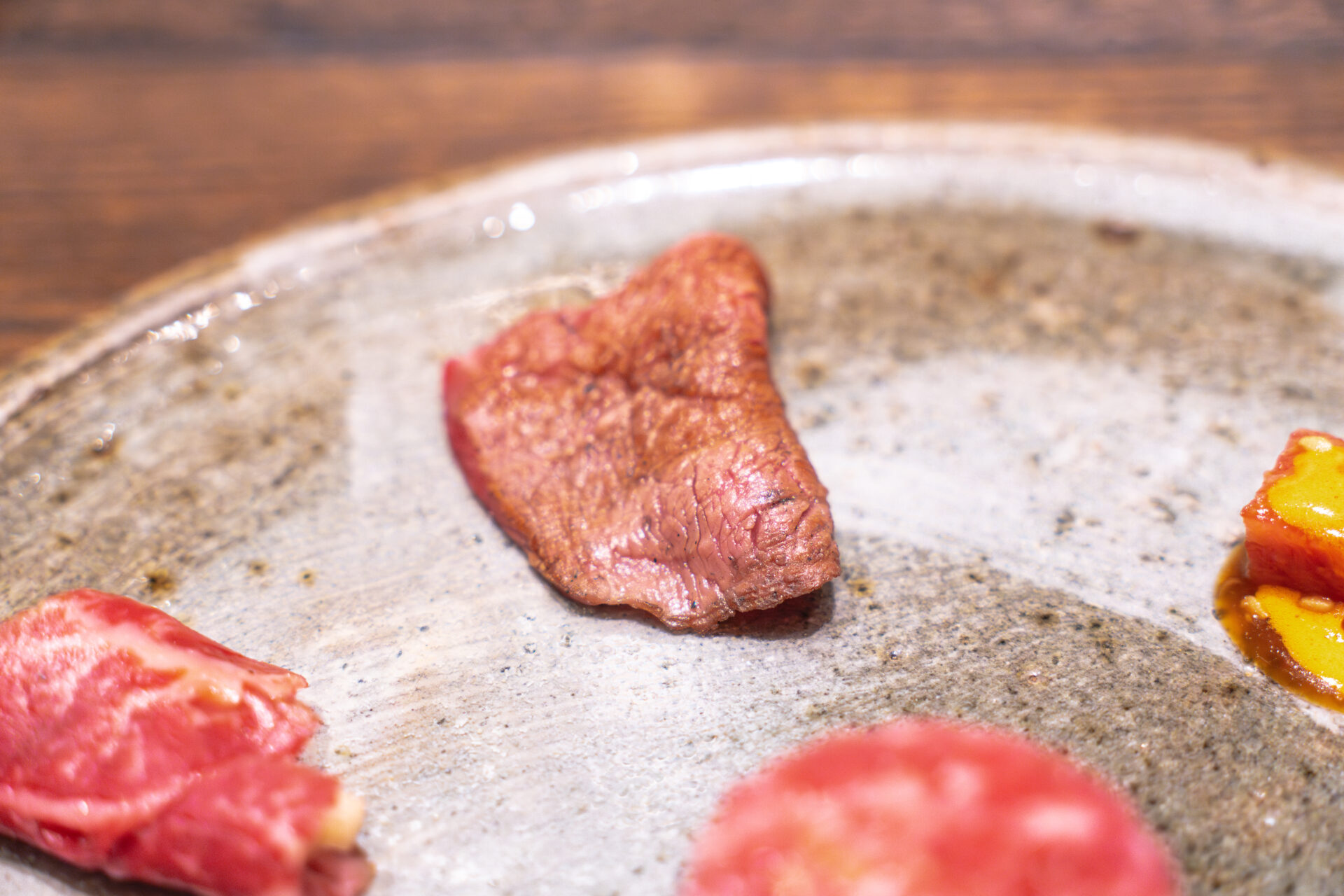
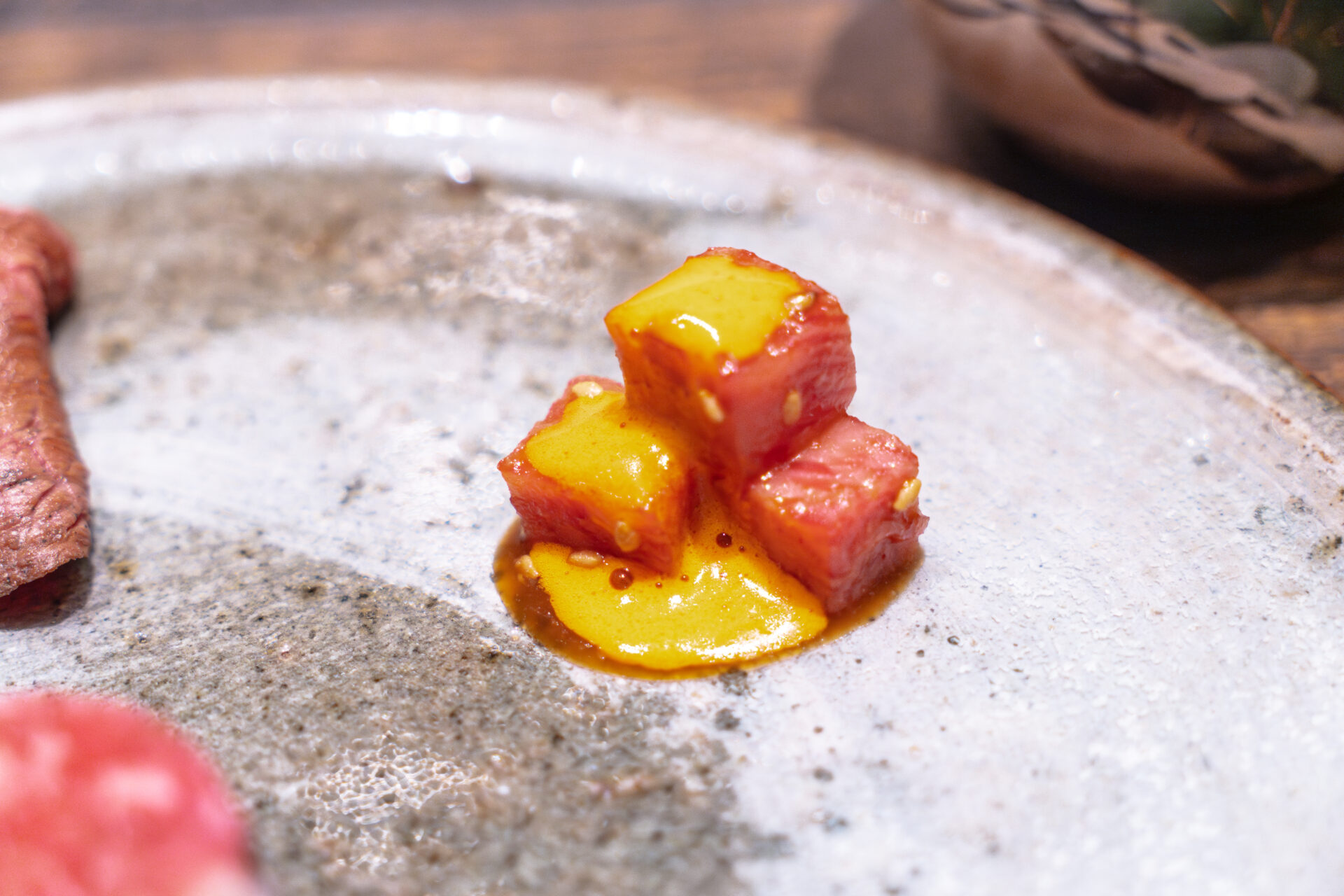
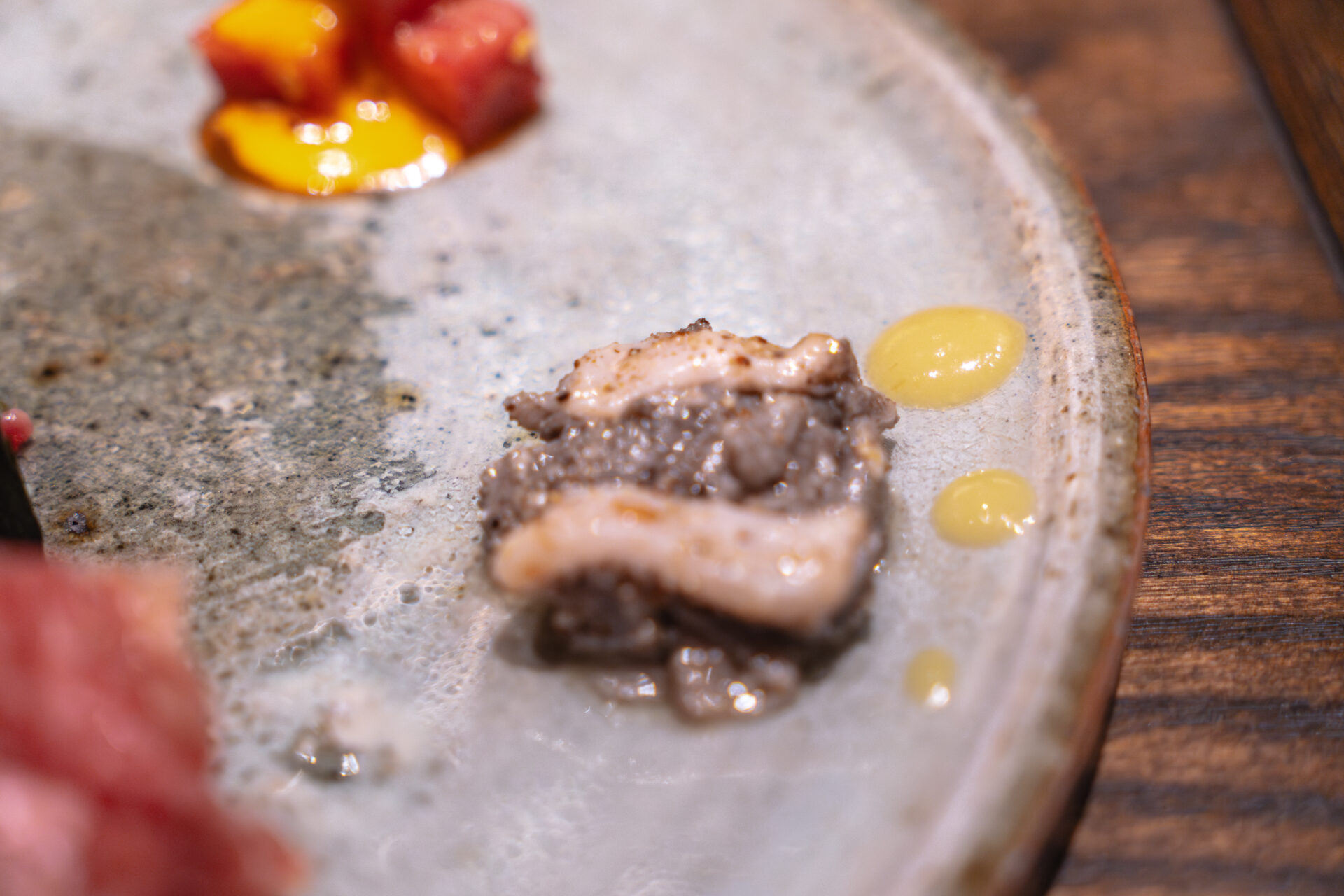
Wagyu Heart Tataki, Straw-Grilled Without Water
A new creation: straw-grilled wagyu heart.
Prepared in a style reminiscent of katsuo no tataki (seared bonito), the heart was skewered and quickly seared over a straw flame, imparting a deep, smoky aroma.
The sliced heart was plated with a plump, firm texture—particularly lush at this time of year.
Dressed in garlic soy sauce, it offered bold, concentrated umami.
Accompanied by a rich variety of condiments: grated ginger, more ginger, fresh domestic garlic, spicy mustard, and perilla (shiso).
Clean yet nostalgic, this was a memorable and honest dish.
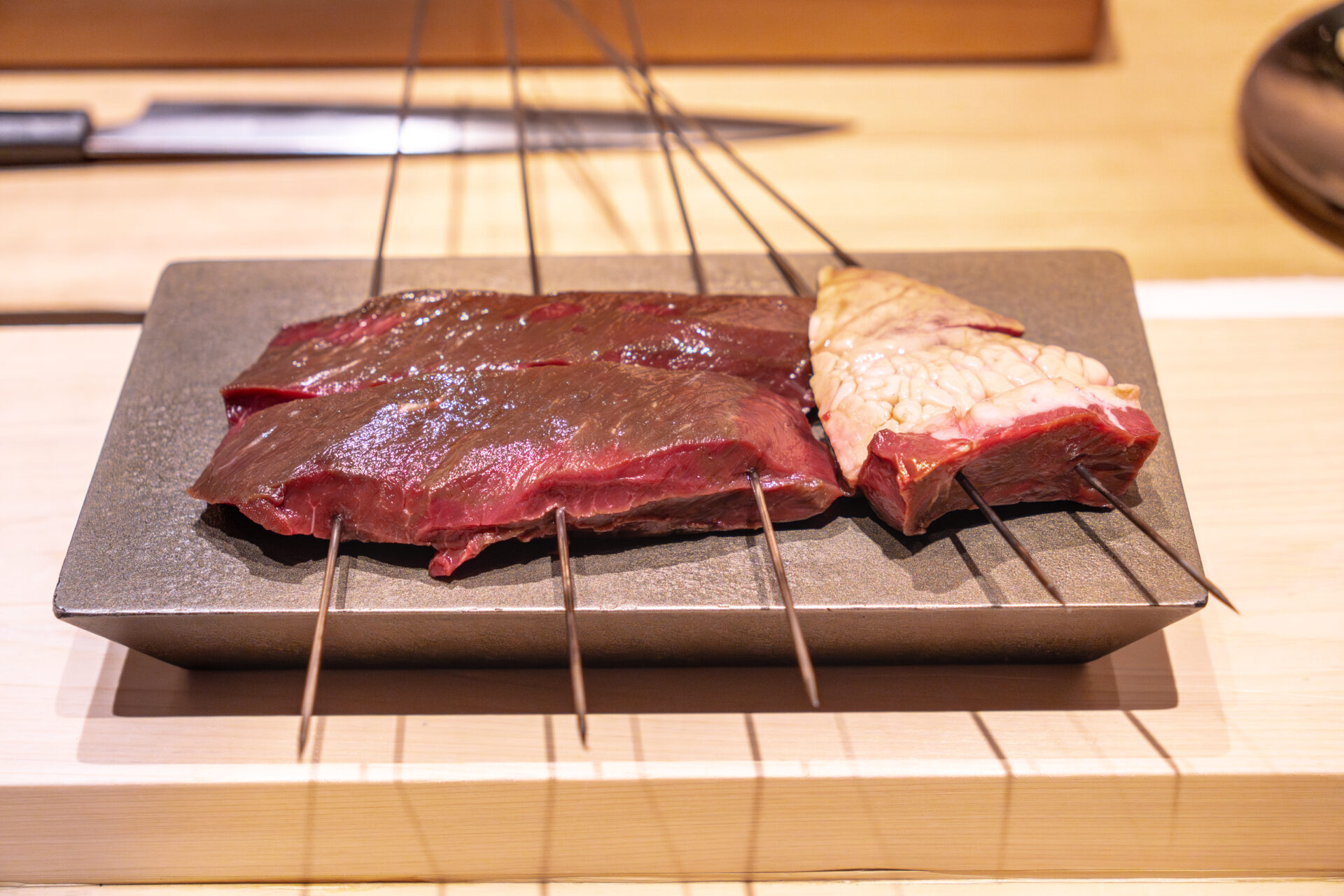
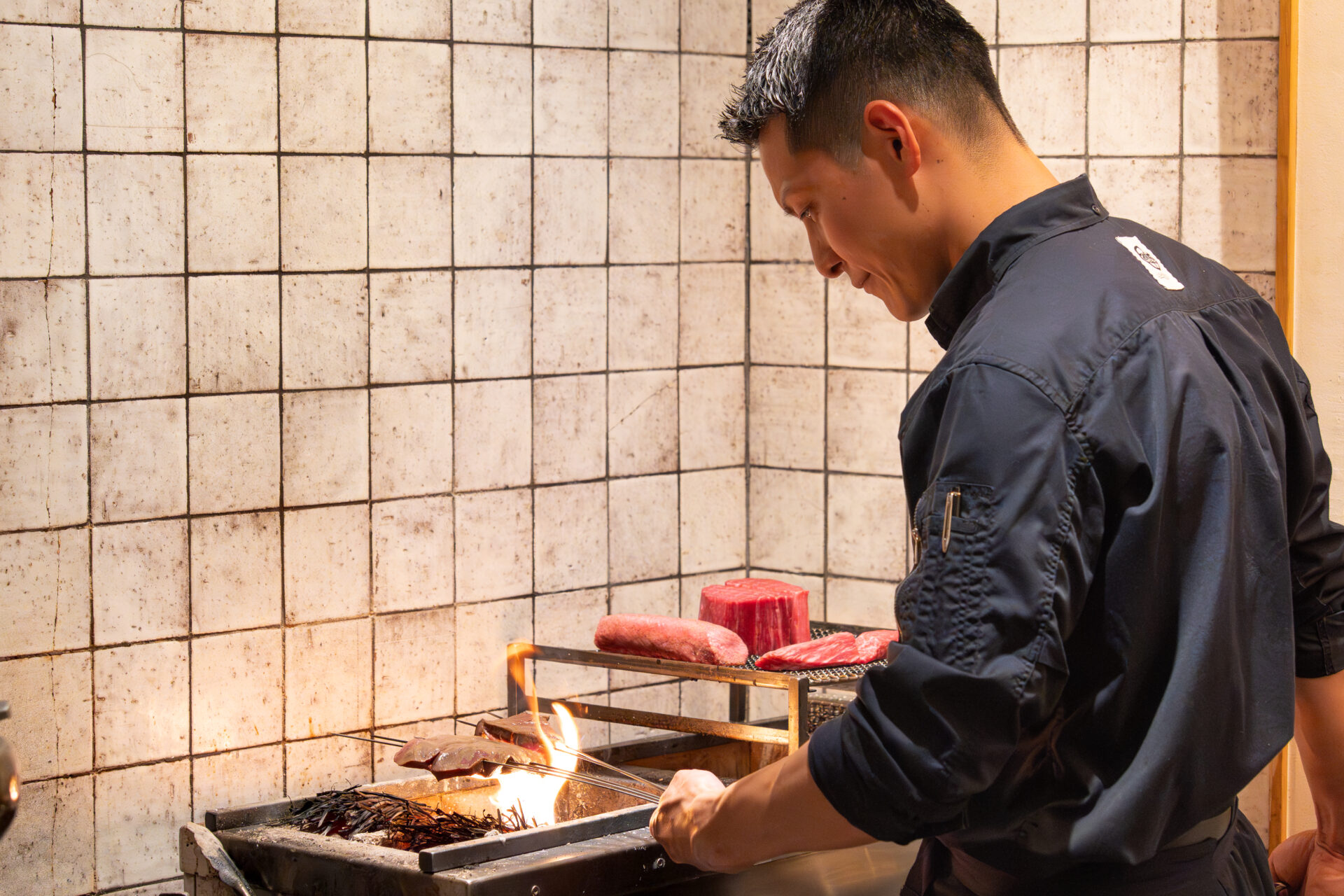
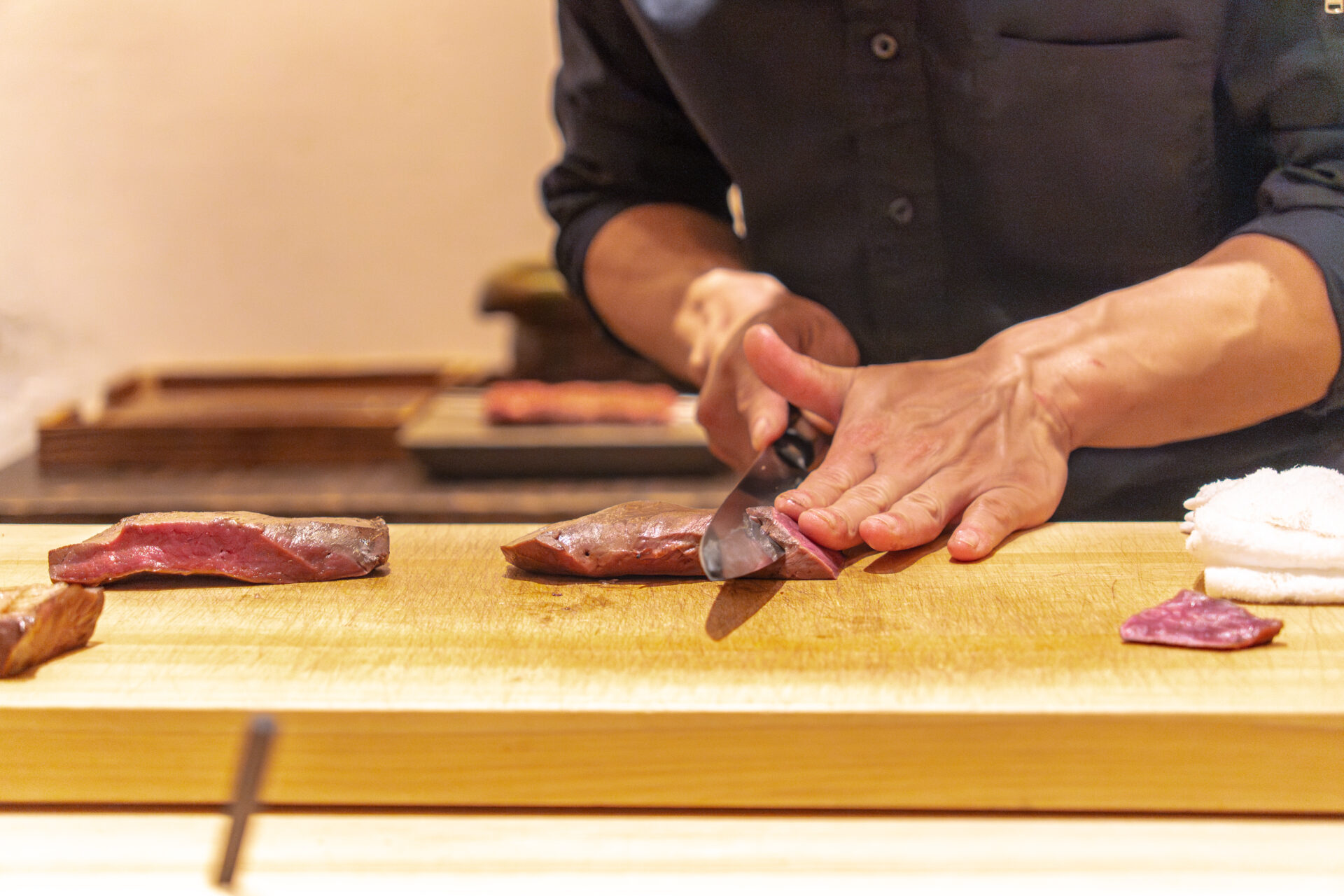
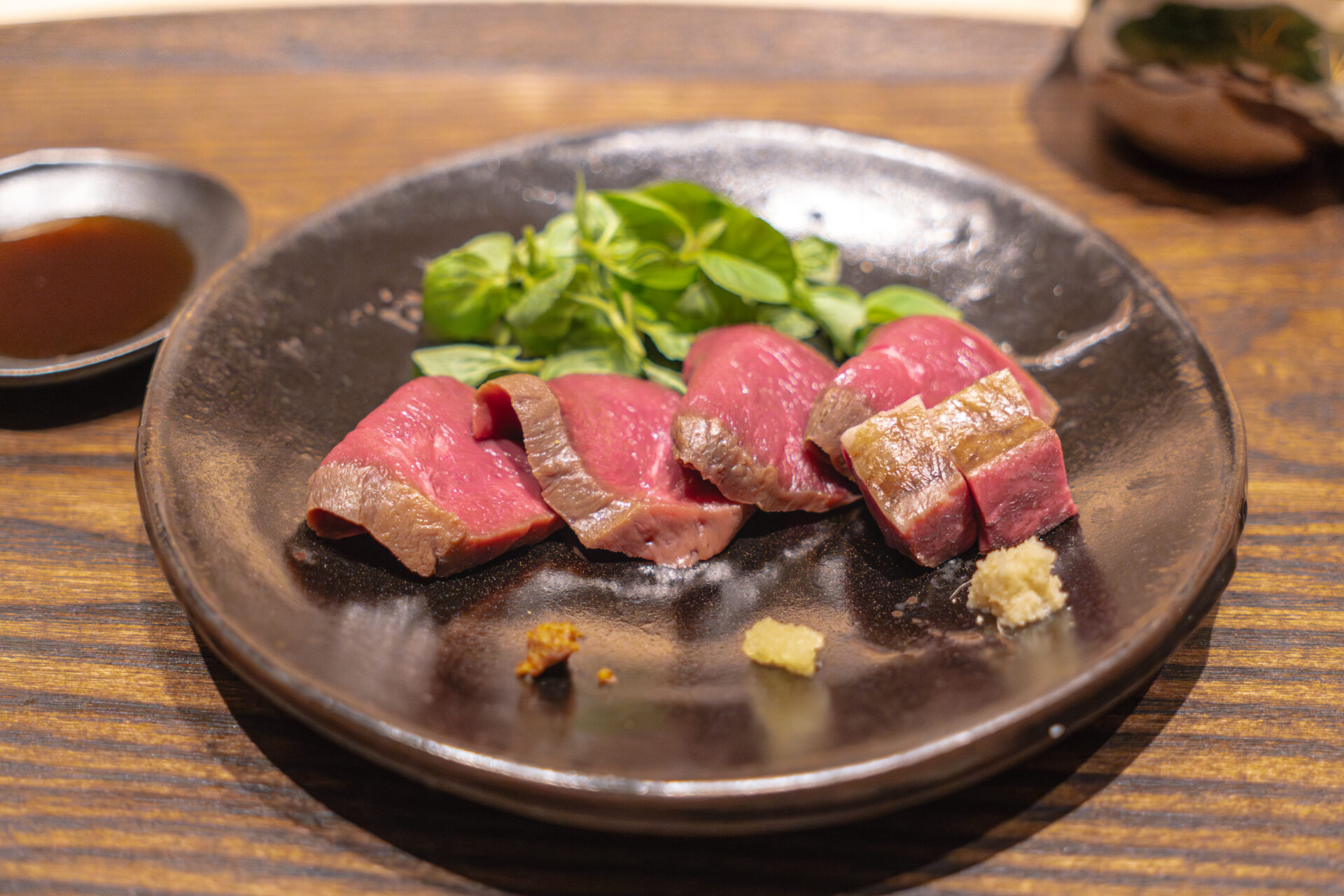
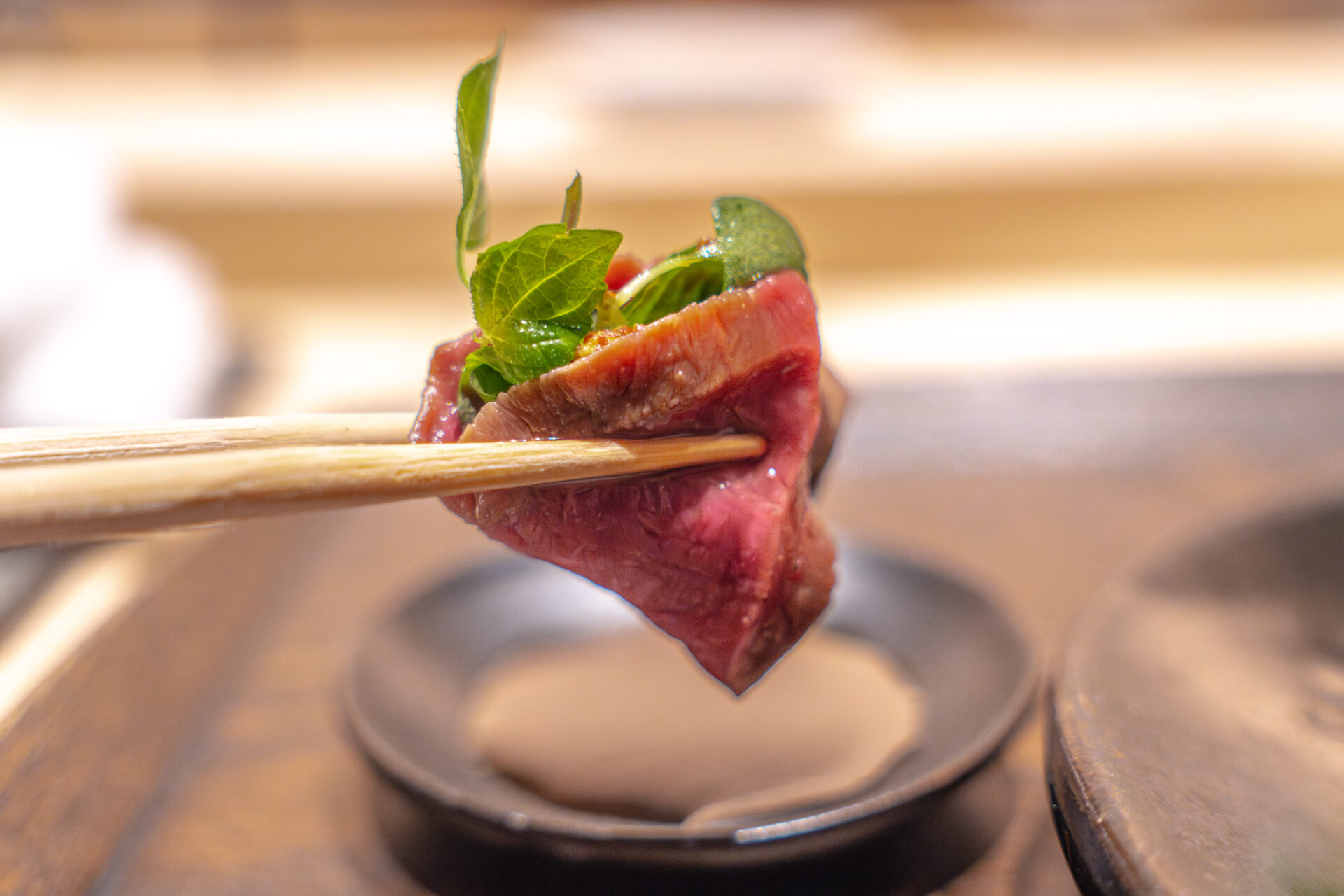
Two Skewers of Grilled Offal
The offal course featured two skewers: liver and tsurami (beef cheek).
The liver was prepared without water to remove impurities, resulting in an astonishingly sweet, smooth texture.
Served tataki-style and generously coated in sesame oil, the flavor was lifted by a deep roasted aroma.
The tsurami followed, also treated without water to highlight its pure meatiness.
Thick-cut and paired with grated garlic, it delivered a dense, bold bite—each chew bursting with concentrated flavor.
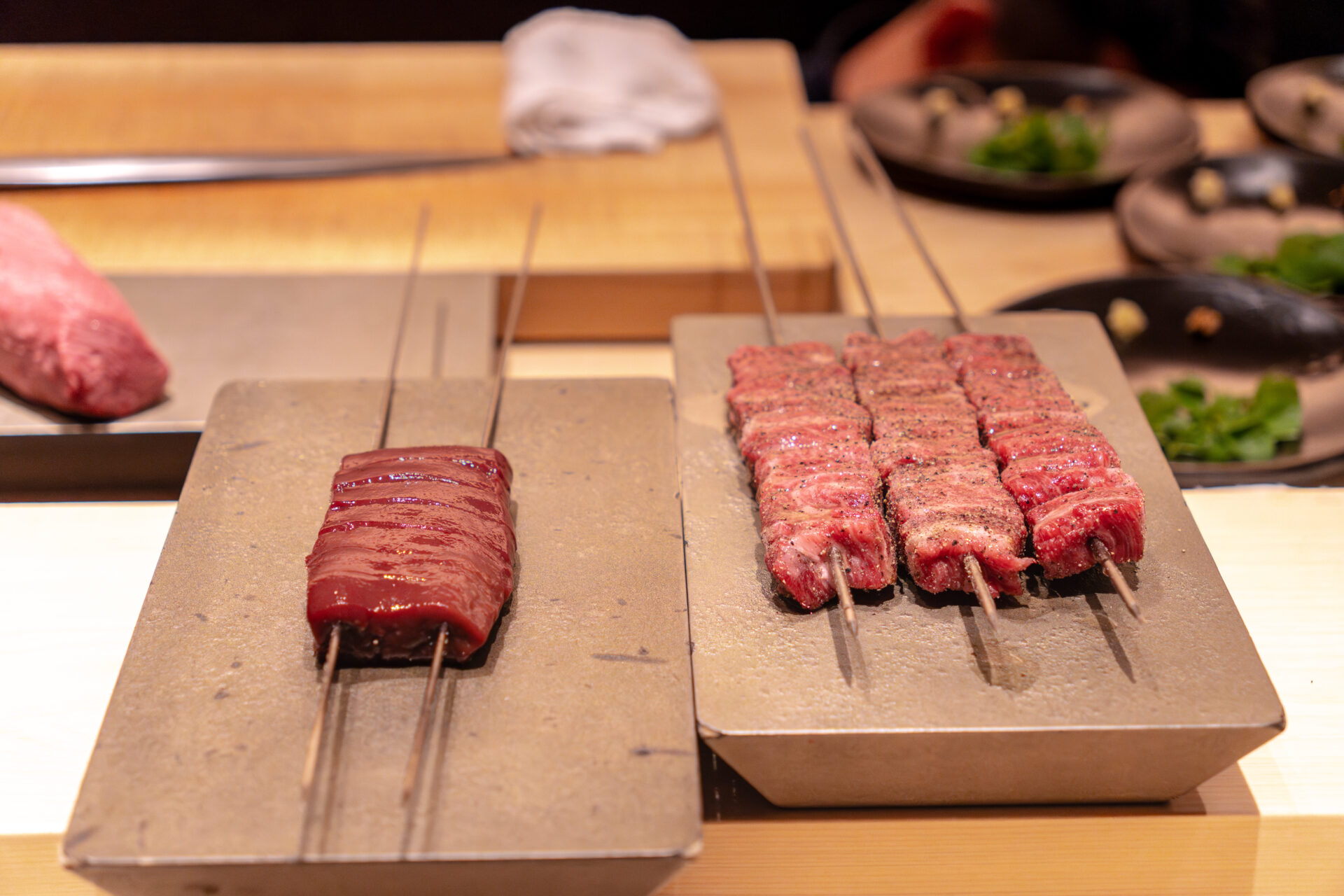
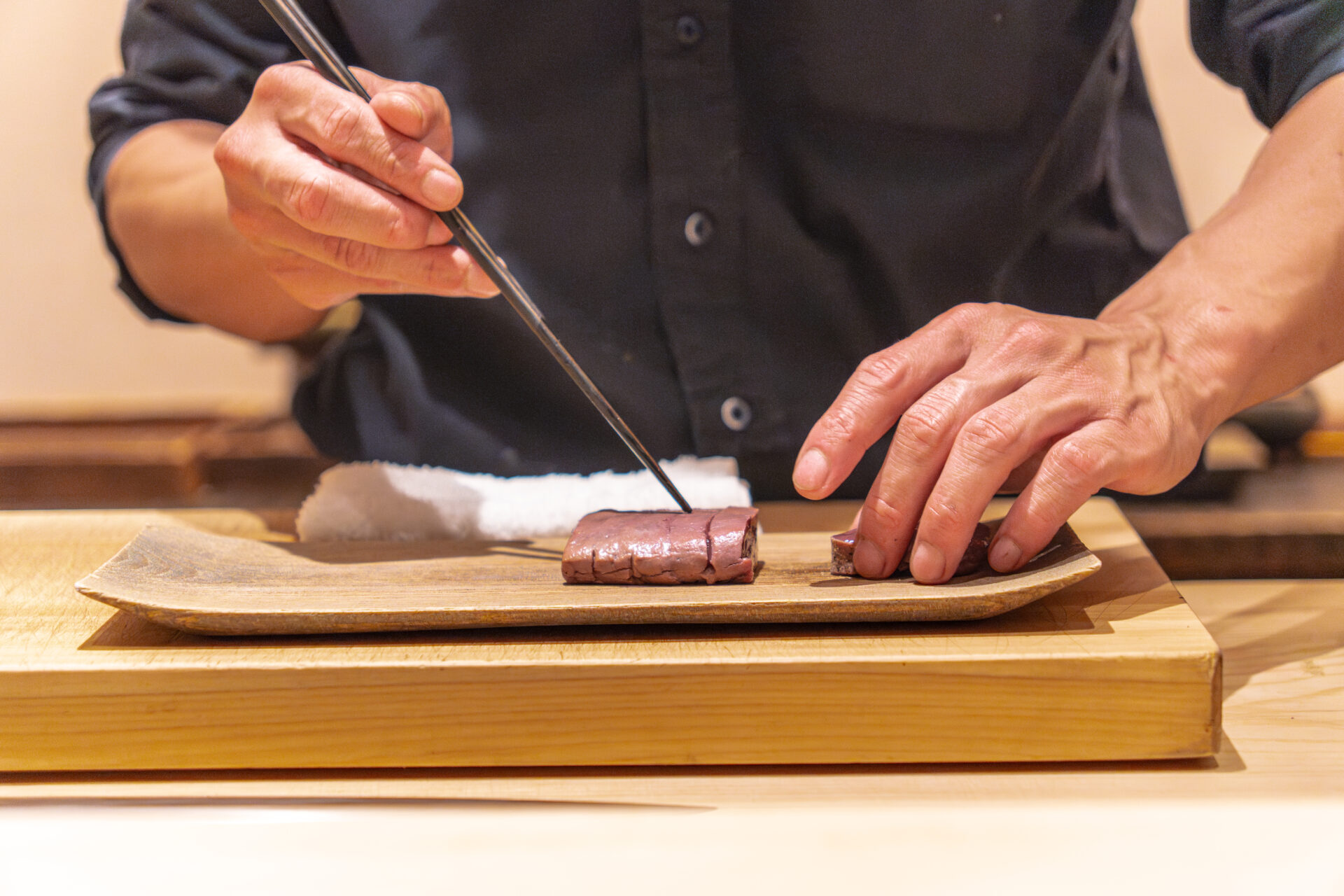
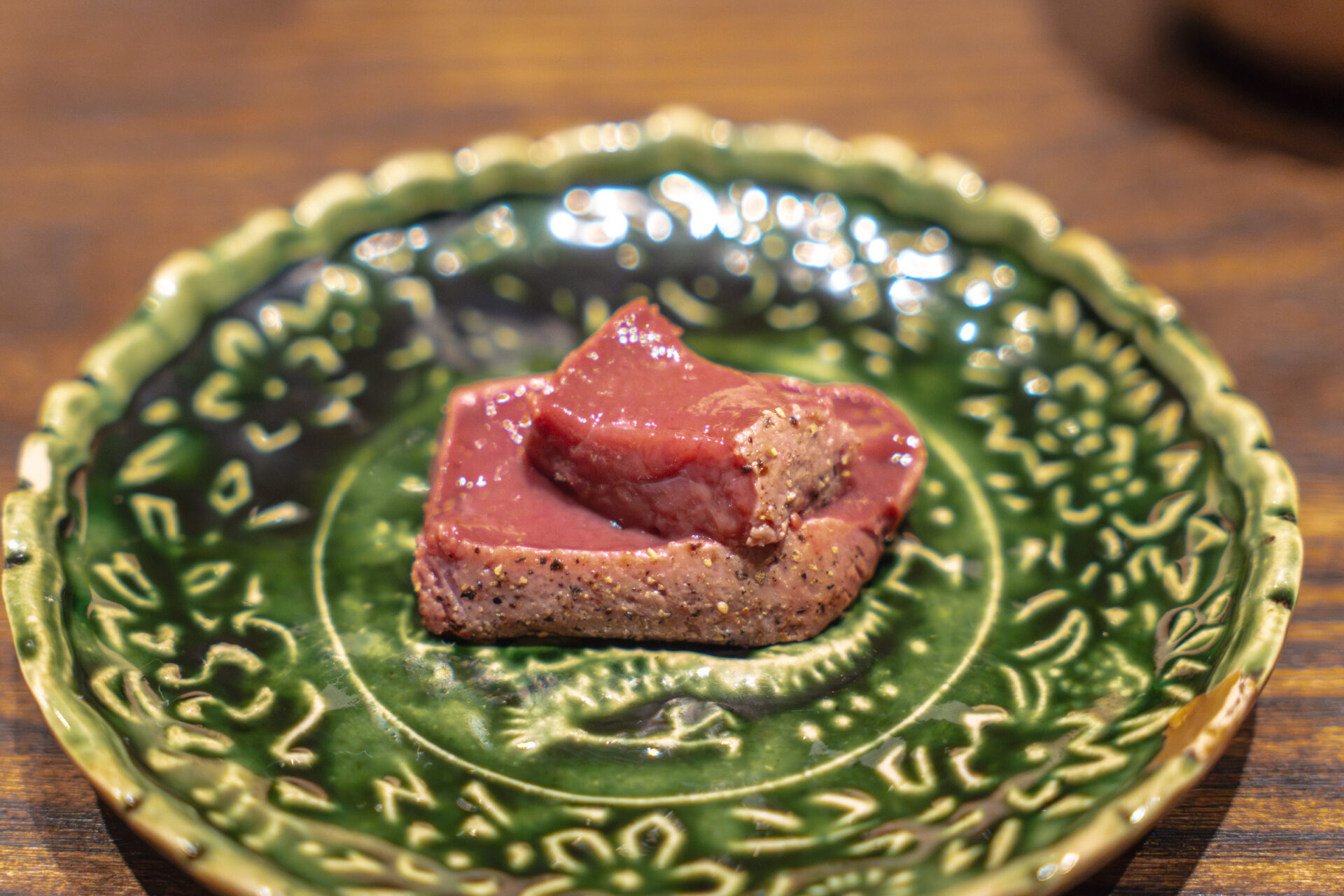
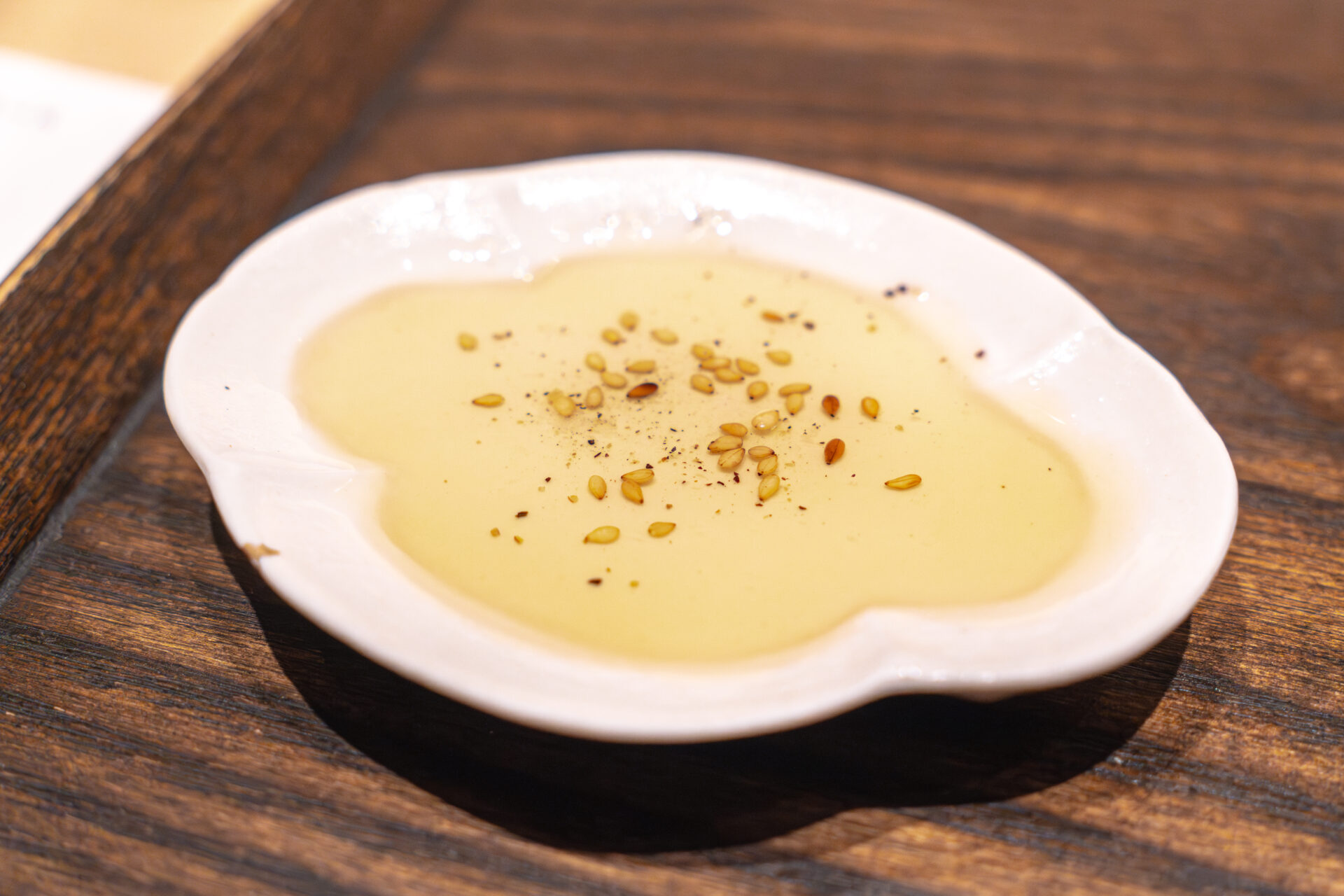
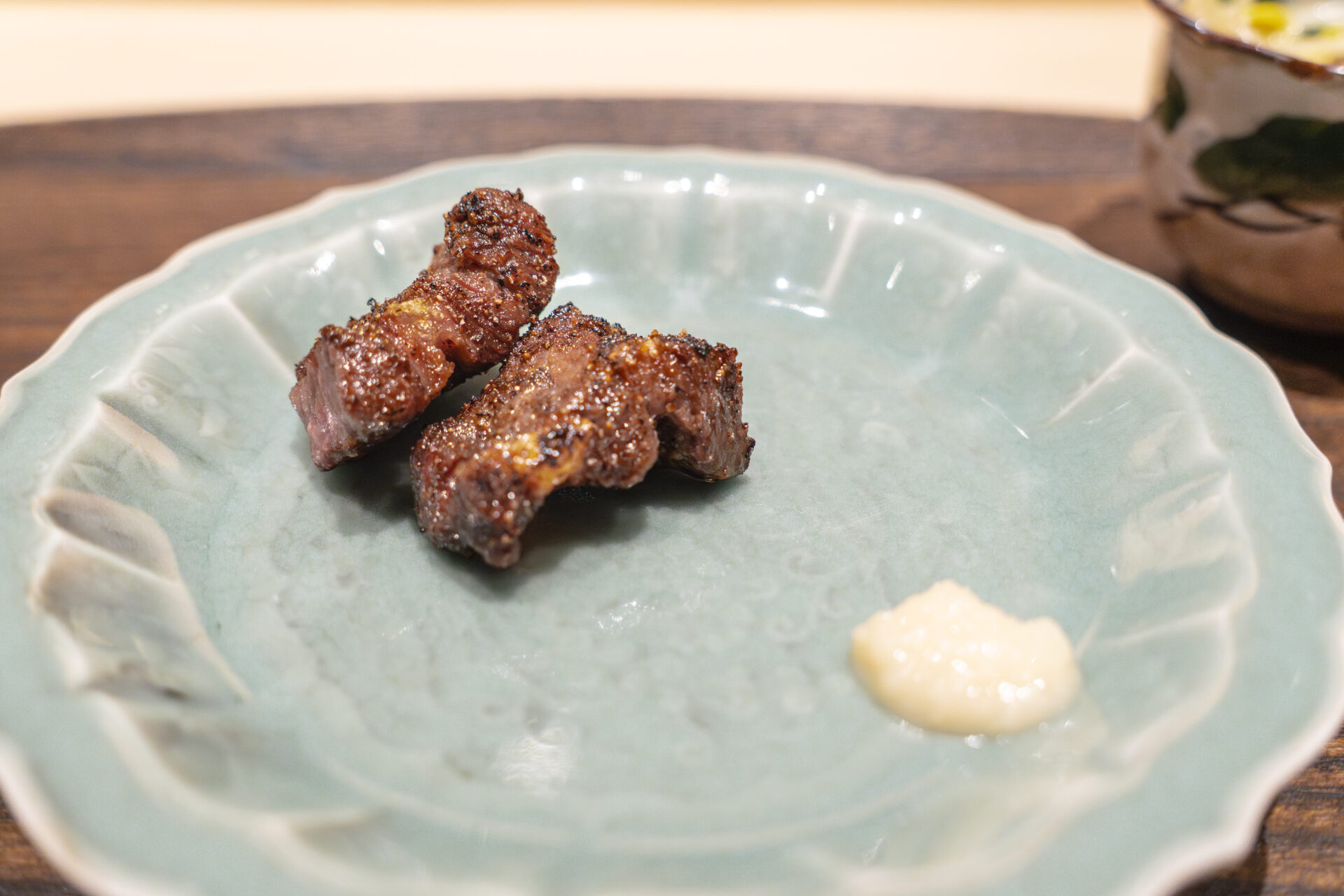
At this point in the meal, a red wine from New Zealand—Emigao 2016—was served.
With its ripe fruit character, delicate tannins, and mellow maturity from aging, it was a perfect match for the sweet, smoky meats.
Especially with the liver and tsurami, the harmony was unforgettable.
Full-bodied yet not heavy, the wine left a lingering finish that gently carried the experience toward the next dish.
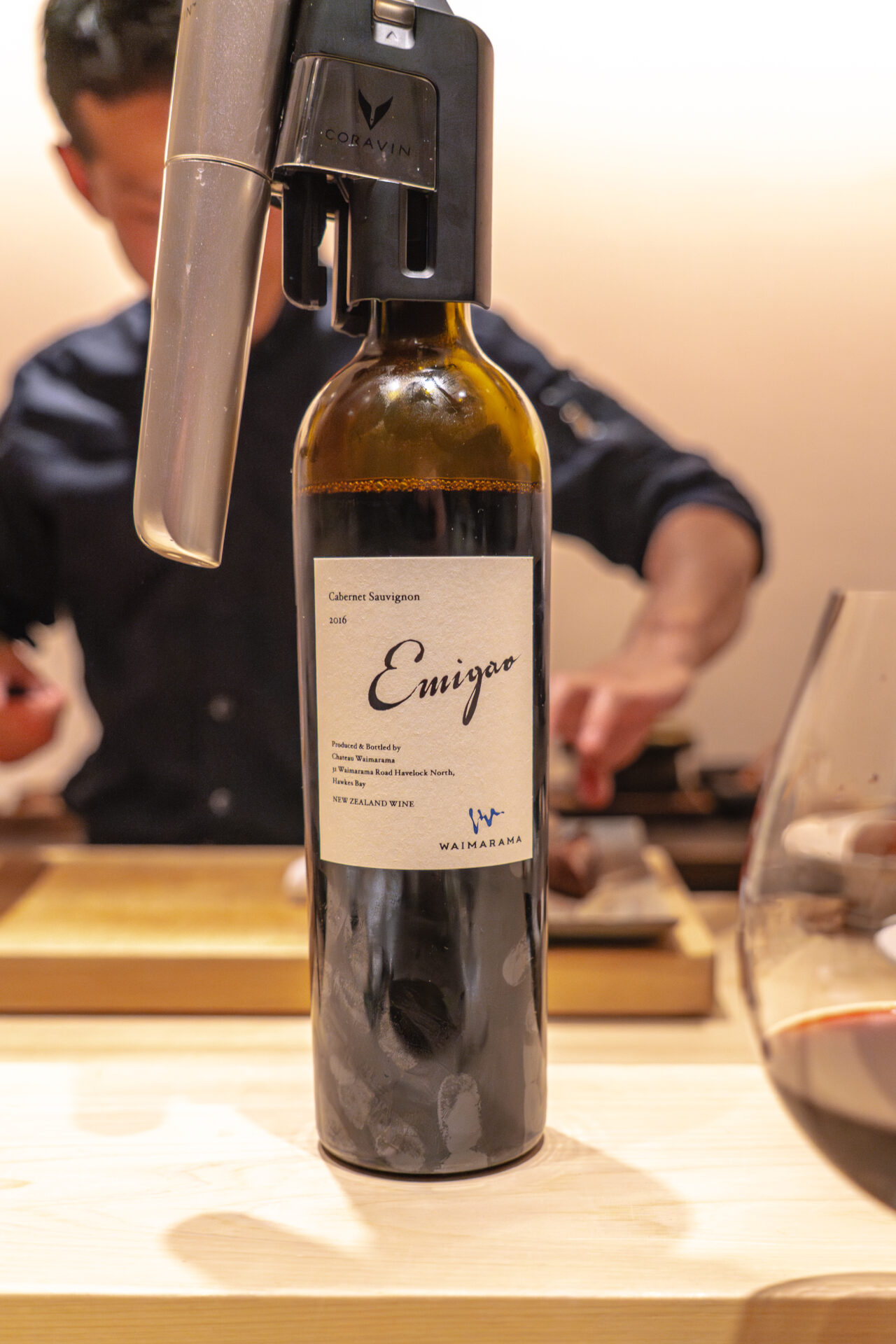
Sennichi Wagyu Tenderloin “Chili Koppe” Sandwich
An unexpected but powerful surprise in the yakiniku course—Chili Koppe.
Crafted by the chef, who has a background as a baker, this house-made koppe-pan (Japanese-style bread roll) is filled with tenderloin, house chili sauce, and red cheddar cheese, then grilled over charcoal for a toasty finish.
Every detail of the bread—its fermentation, ingredient balance, mixing process—was meticulously adjusted to achieve maximum softness and melt-in-the-mouth texture.
A particular challenge was keeping the crust from becoming too tough due to its compact shape—something the chef overcame with precision and care.
This is a creation not only about flavor but also about thoughtful structure—a singular dish that cannot be replicated elsewhere.
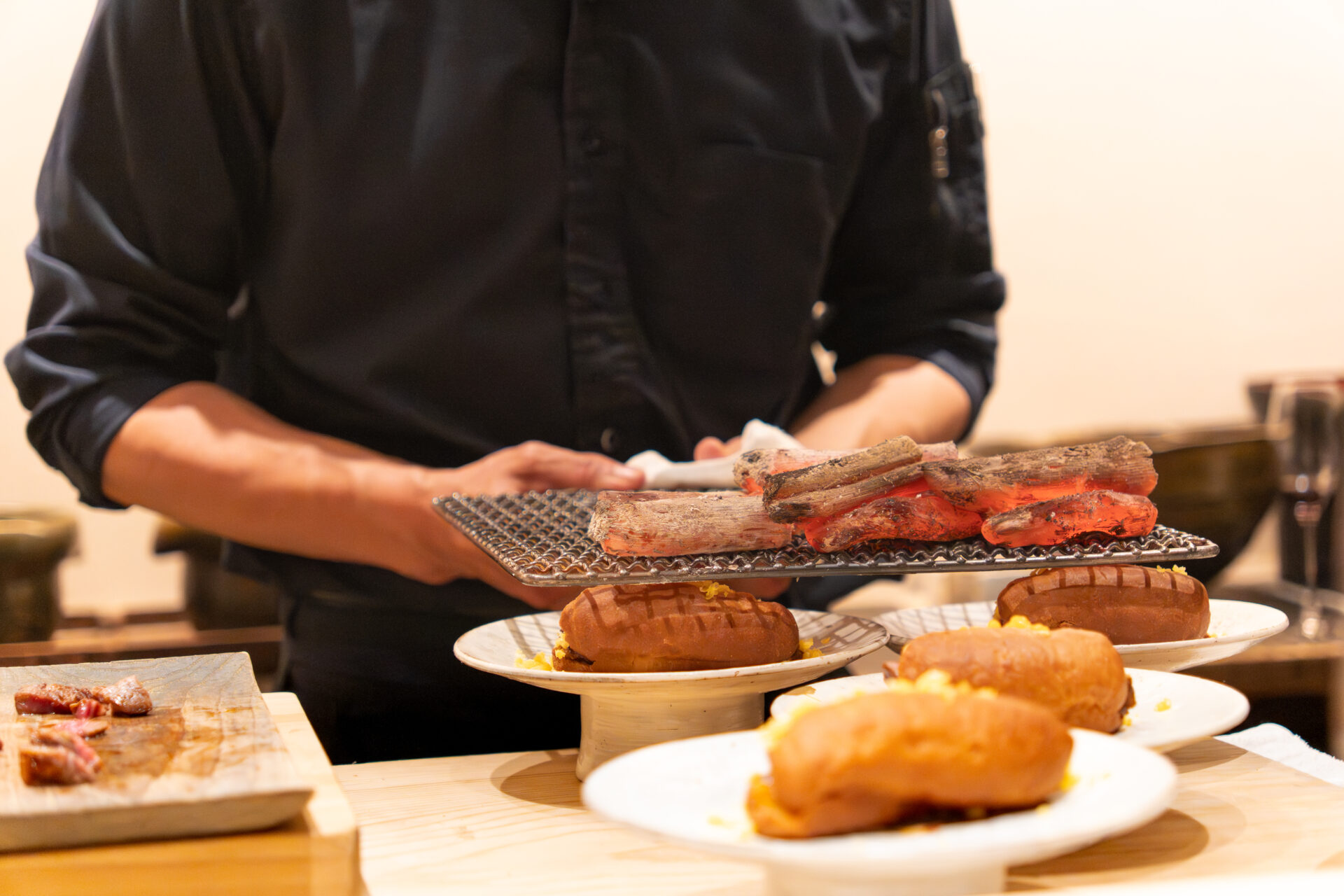
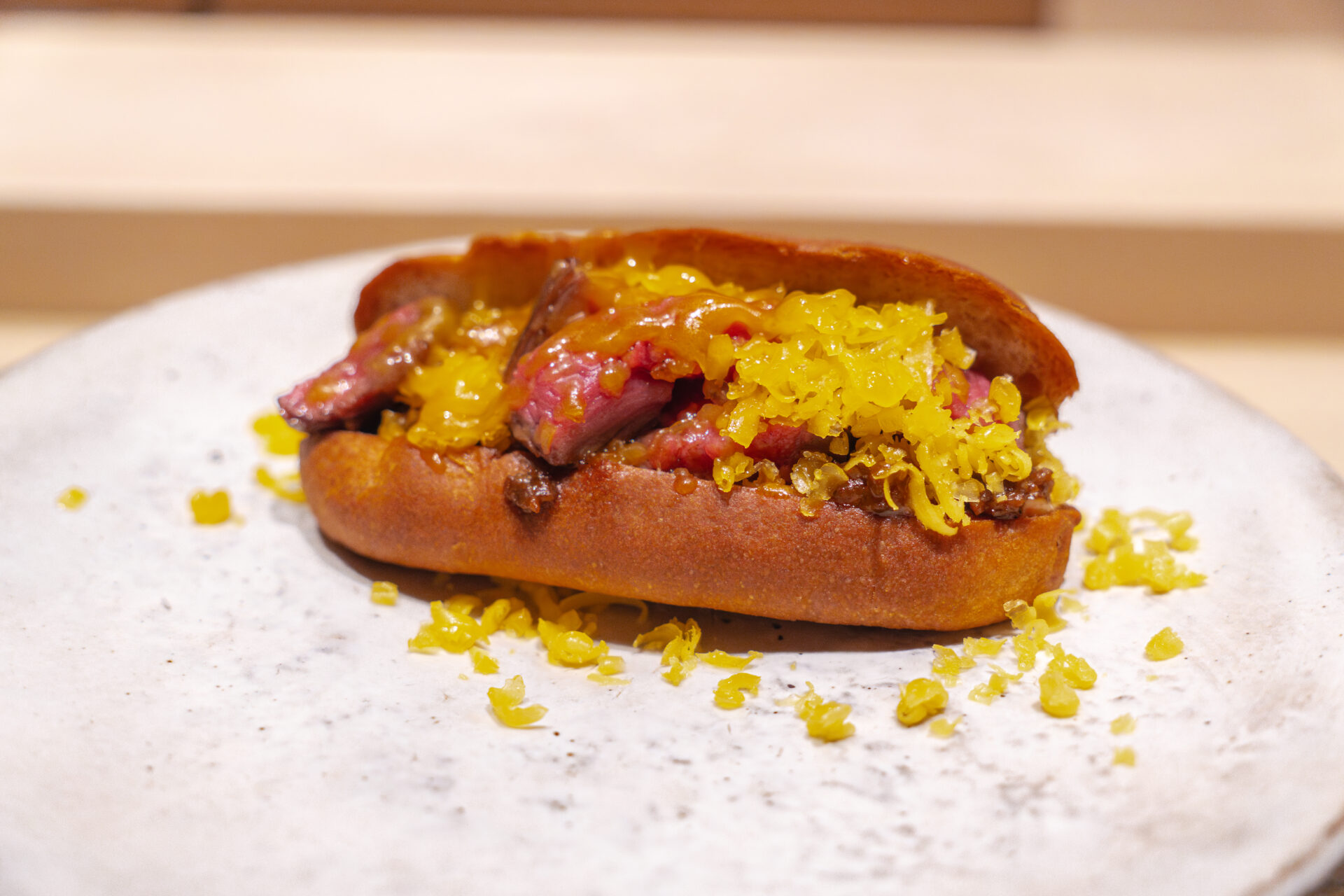
Whole-Grilled Tongue by Mr. Nakagawa
A true showstopper: the whole-grilled beef tongue.
The entire tongue is slow-grilled, then dramatically sliced down the middle.
Steam rises from the cross-section, revealing that the heat has thoroughly penetrated the core.
Its vibrant interior color and thick-cut presence are breathtaking.
The first bite is served simply—just the meat.
As it touches the tongue, the umami gently spreads, and with each chew, juices burst forth.
The second bite is finished with a squeeze of sudachi citrus, its bright aroma lifting the natural sweetness of the meat and sharpening its profile.
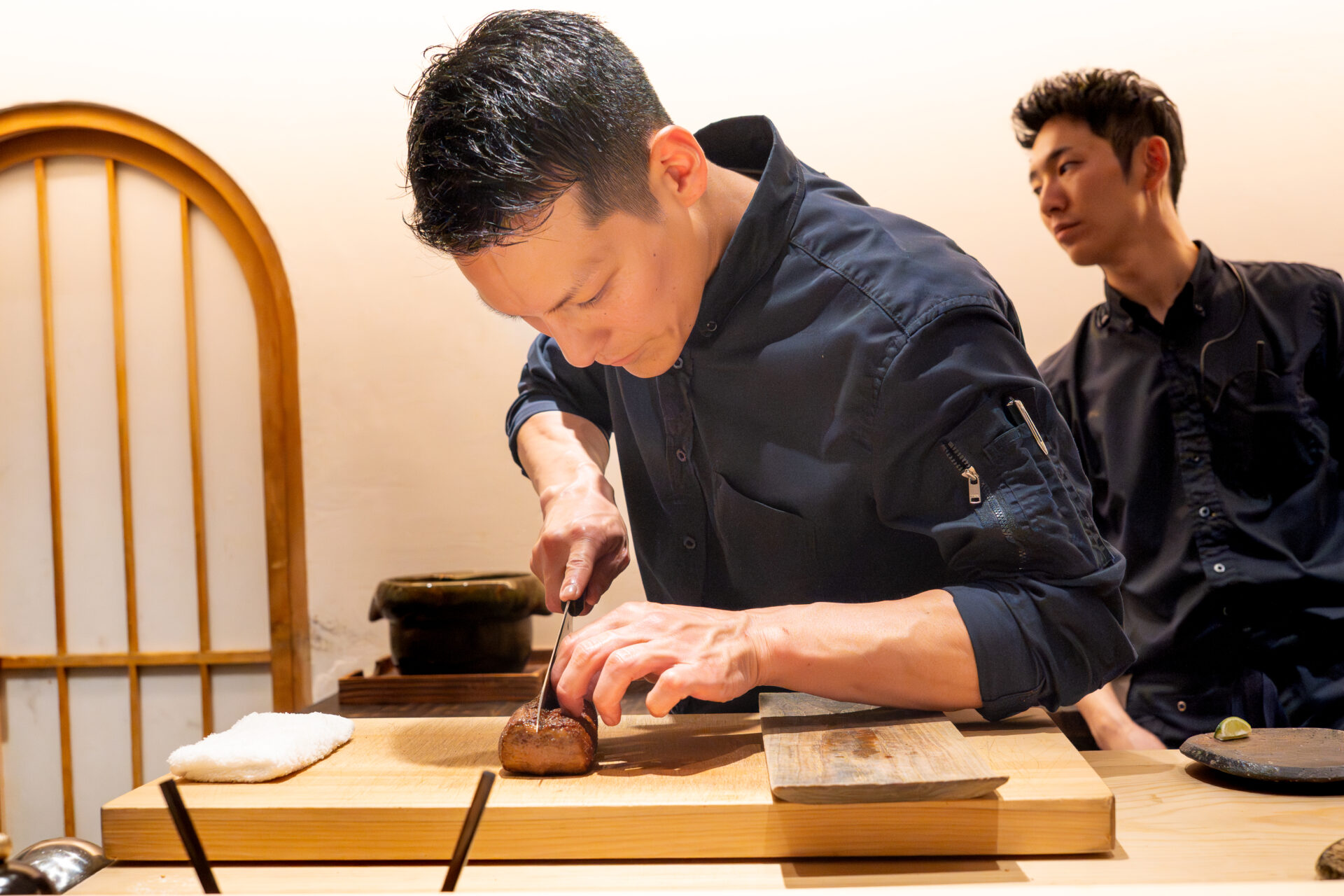
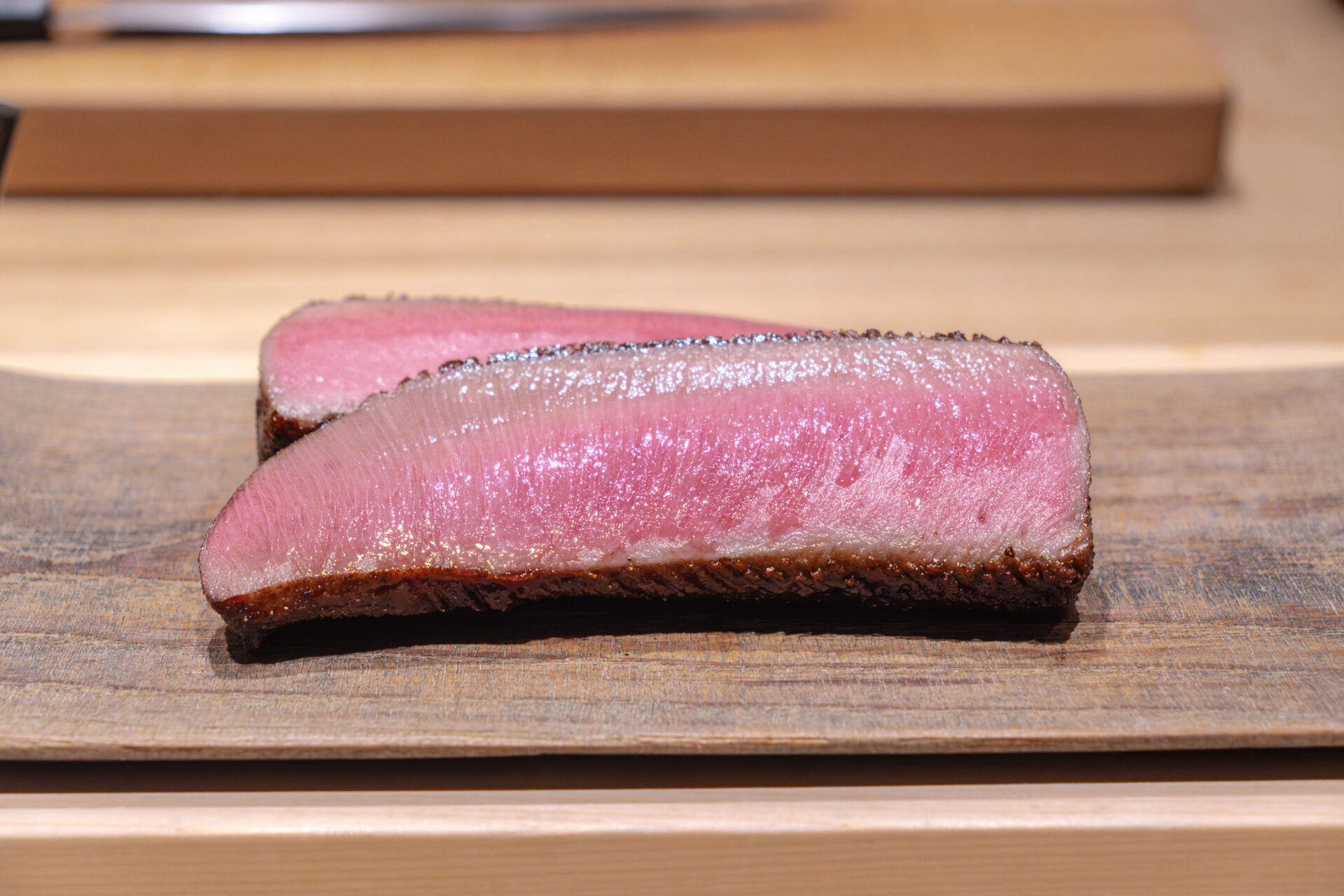
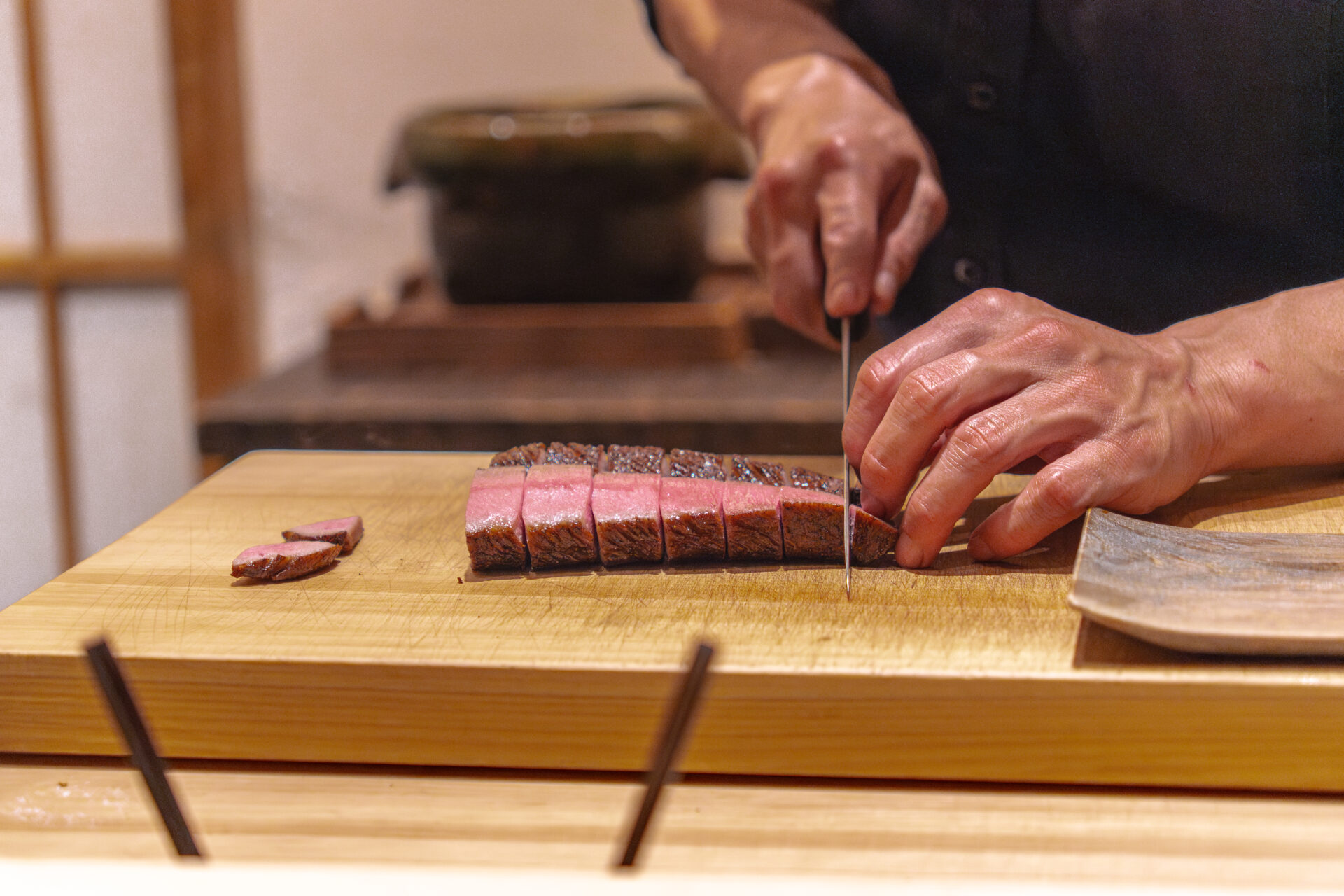
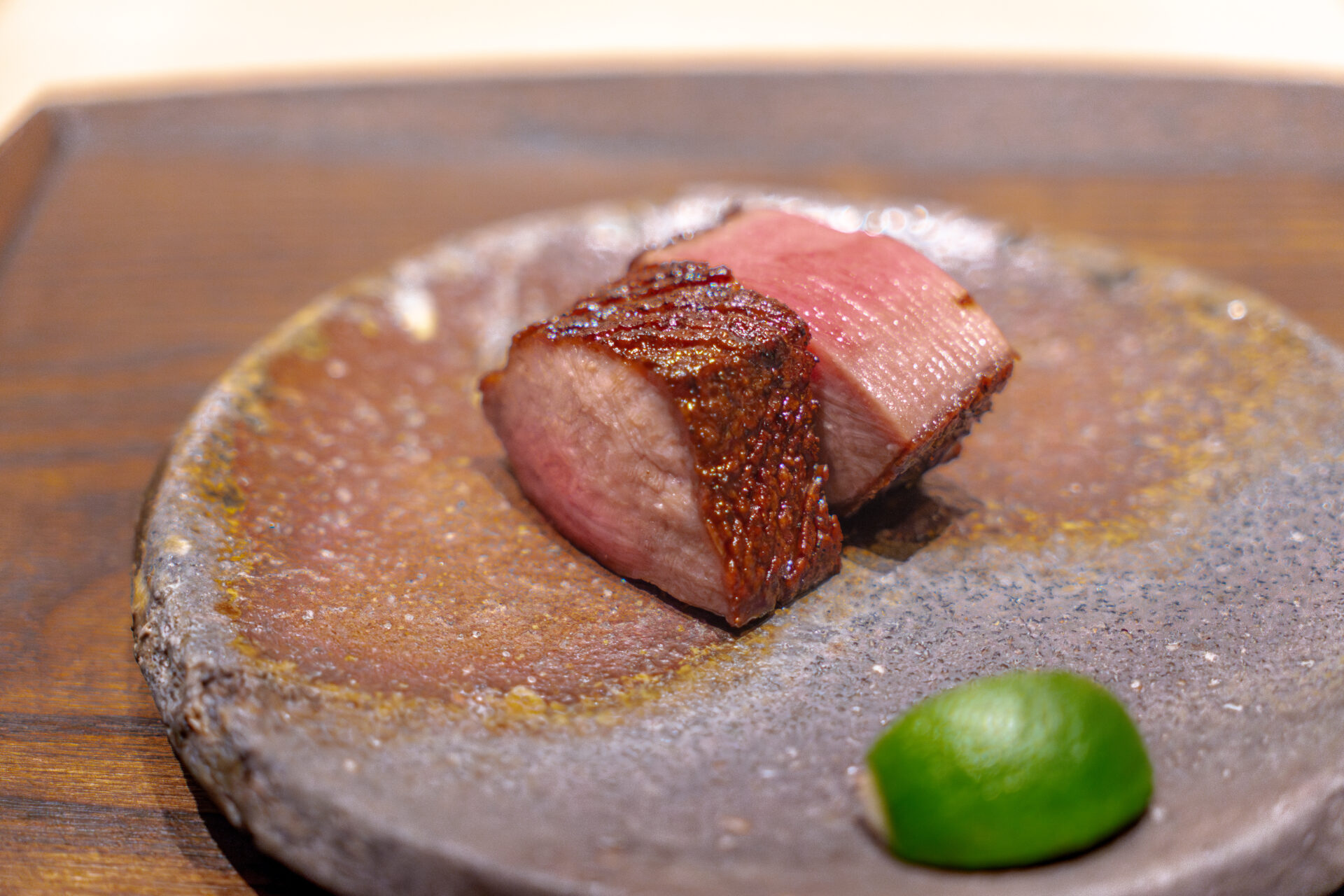
Two Kinds of Offal, Water-Free Grilled
[Upper Mino with Green Chili, and Shima-cho with Grape Sansho]
The grilled course then shifts to showcase the character of offal with two carefully curated plates.
First: upper mino dressed with green chili.
Its crisp texture combines beautifully with the fresh spiciness of the chili, enhancing the mino’s innate flavor.
Vivid in aroma and crunch, it injects a pleasant tension into the flow of the course.
Next: shima-cho with grape sansho.
The sweetness and bounce of the fat are met with the bright fragrance and numbing spice of grape sansho, leaving a surprisingly clean aftertaste.
Despite its richness, the balance is so well-judged, you can’t help but reach for more.
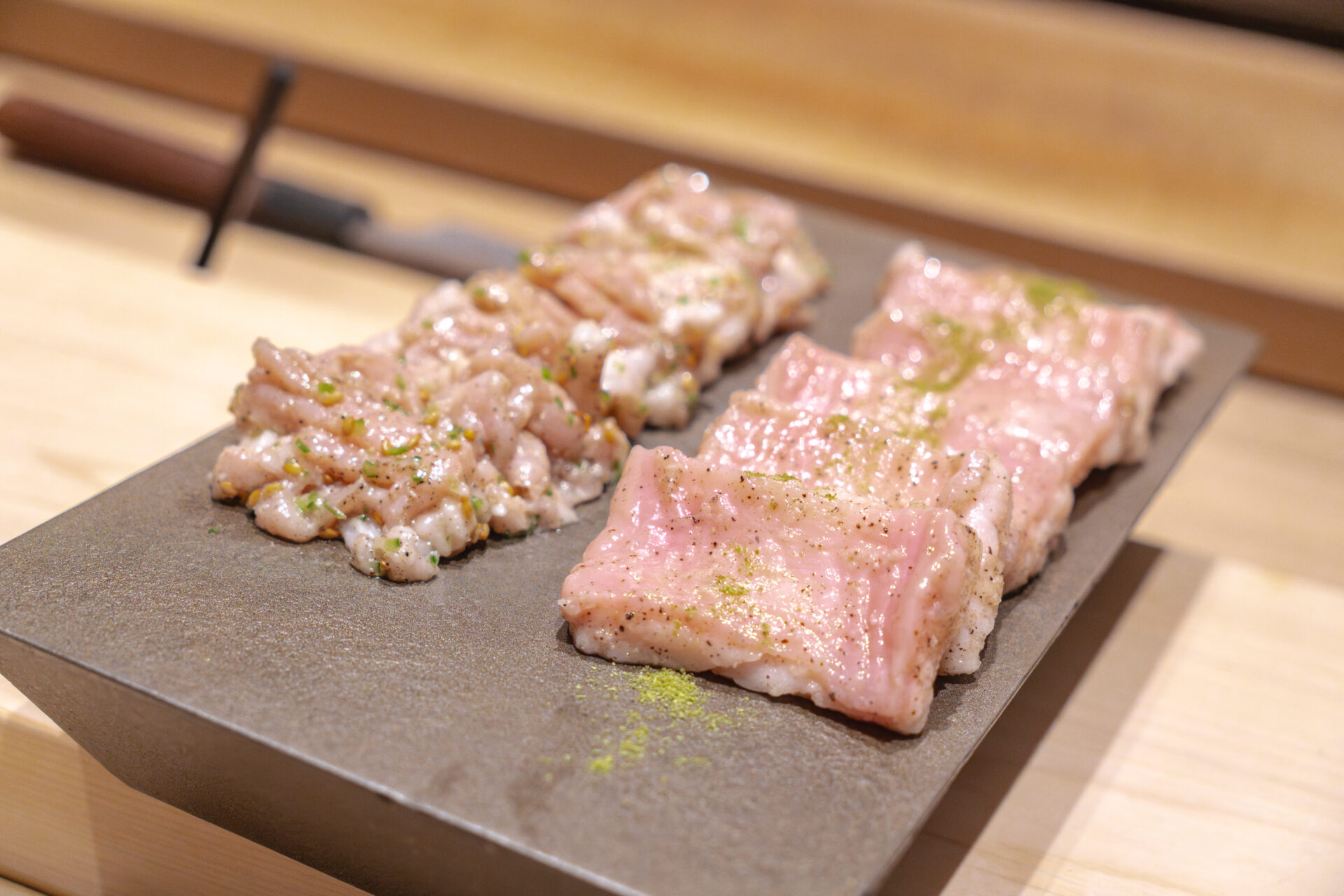
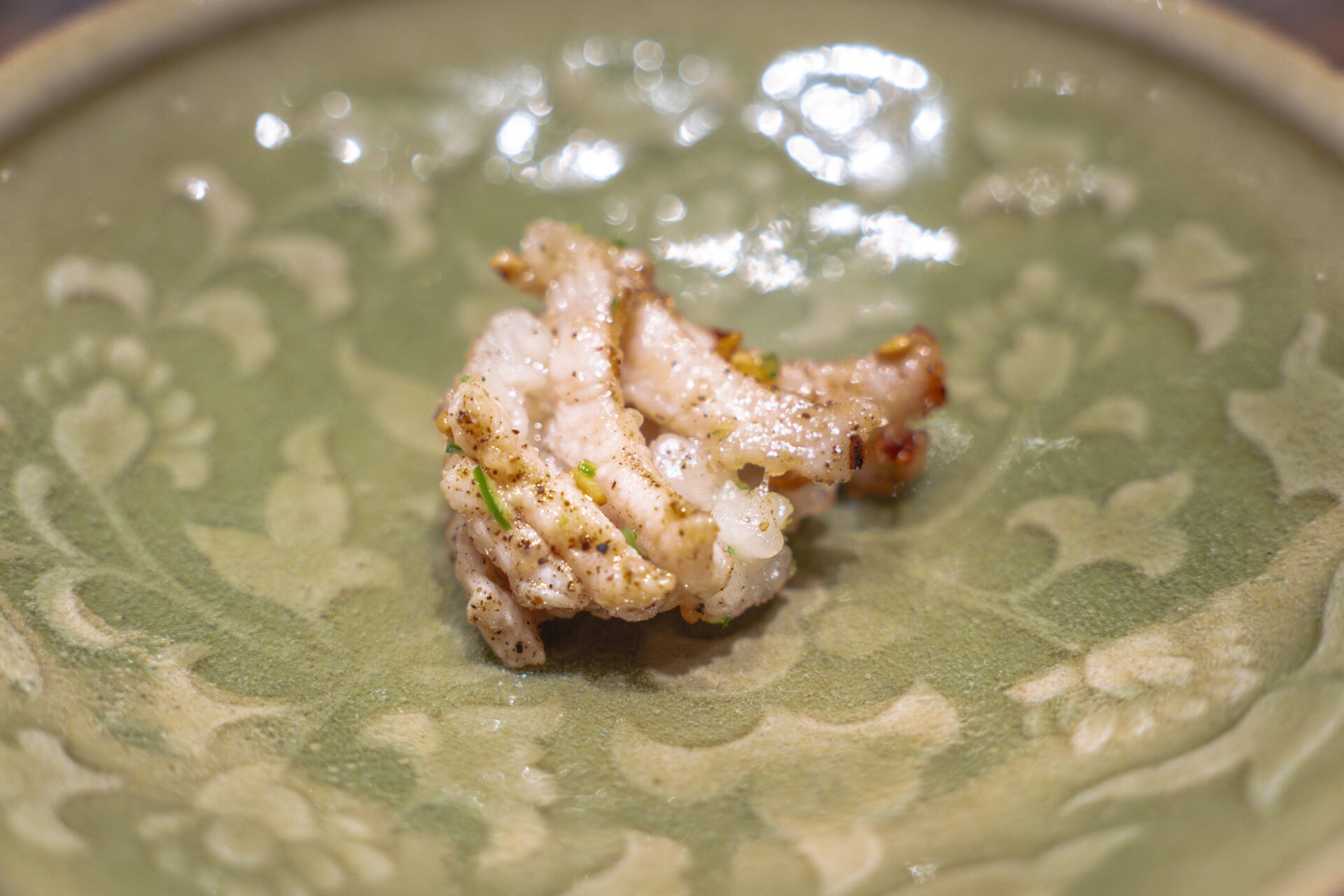
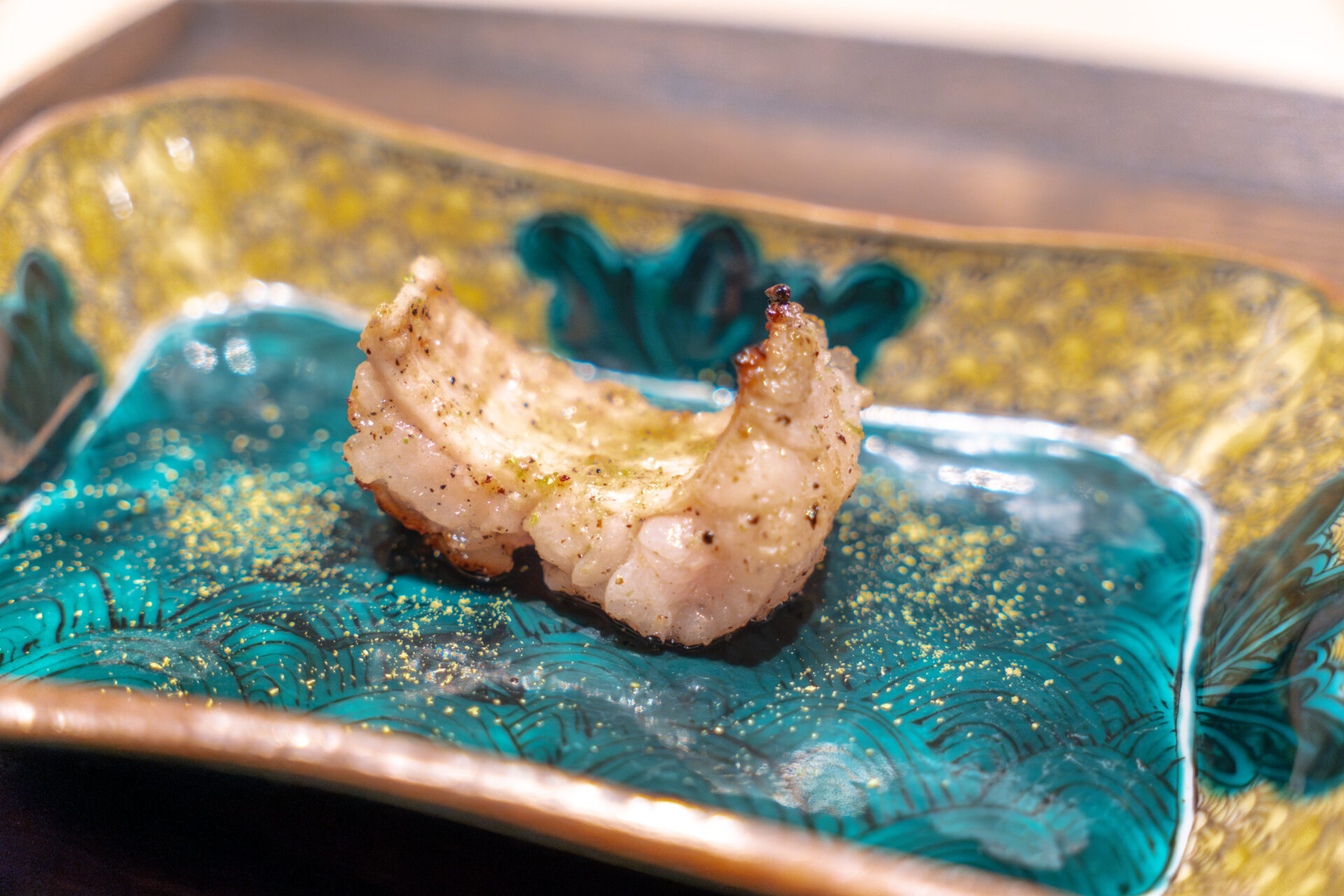
Extra-Thick Cut Chateaubriand from Sennichi Wagyu
The main dish: a thick-cut chateaubriand steak from Sennichi Wagyu.
The center remains vividly red and moist, the result of precise, gentle grilling.
No seasoning is applied—just a side of salt and black pepper to begin.
Biting into the seared surface cuts through the fibers cleanly, releasing a burst of beef aroma and texture.
Midway through the course, a unique yuzu kosho from Aichi Prefecture is introduced.
Made by an unconventional artisan, it offers a distinct citrus-salt balance that pairs beautifully with the sweetness of the meat.
Later, the steak is topped with a sauce rich in finely chopped onions—inviting yet another transformation of flavor.
A dish with layered expressions that evolve throughout, designed to never bore the palate.
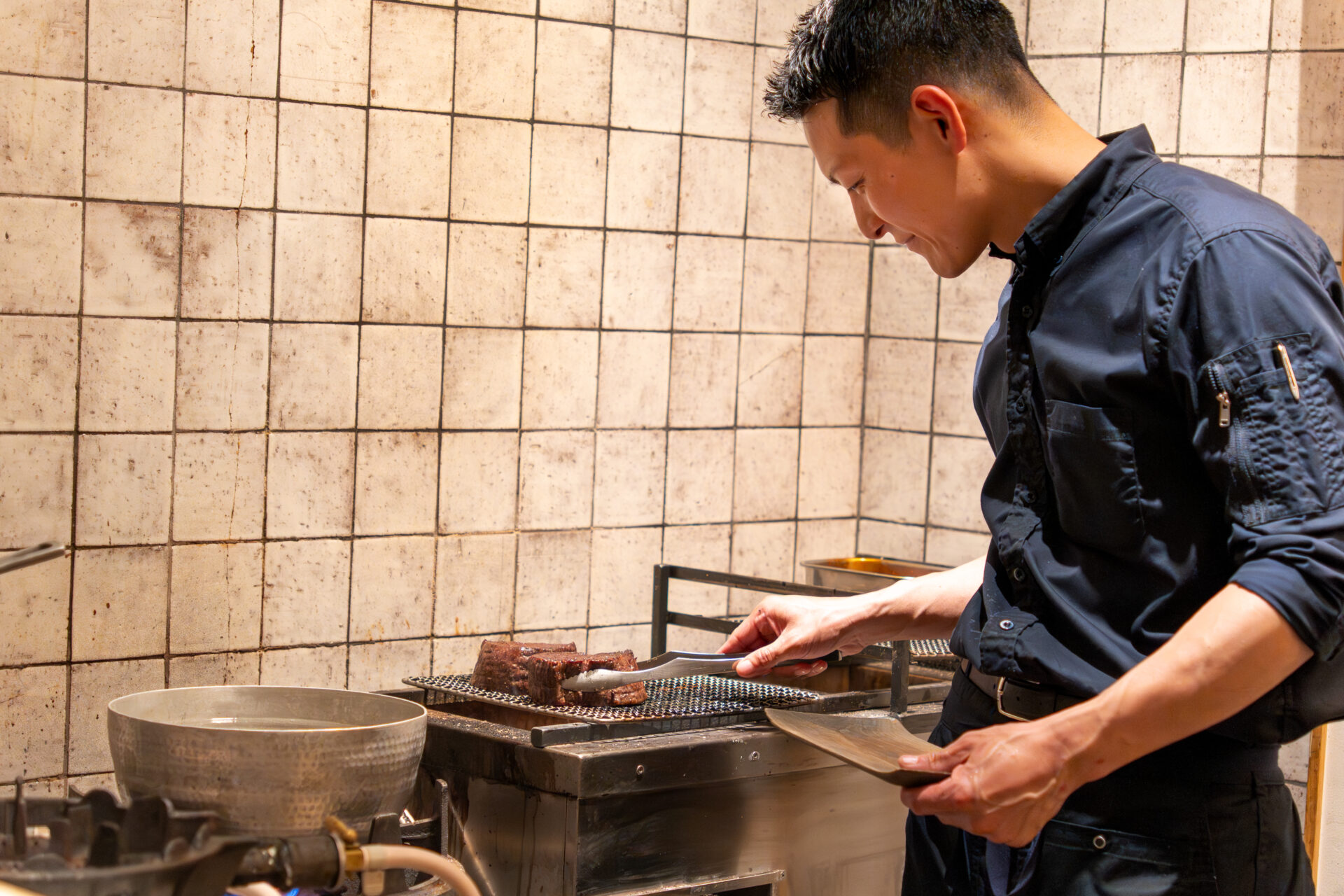
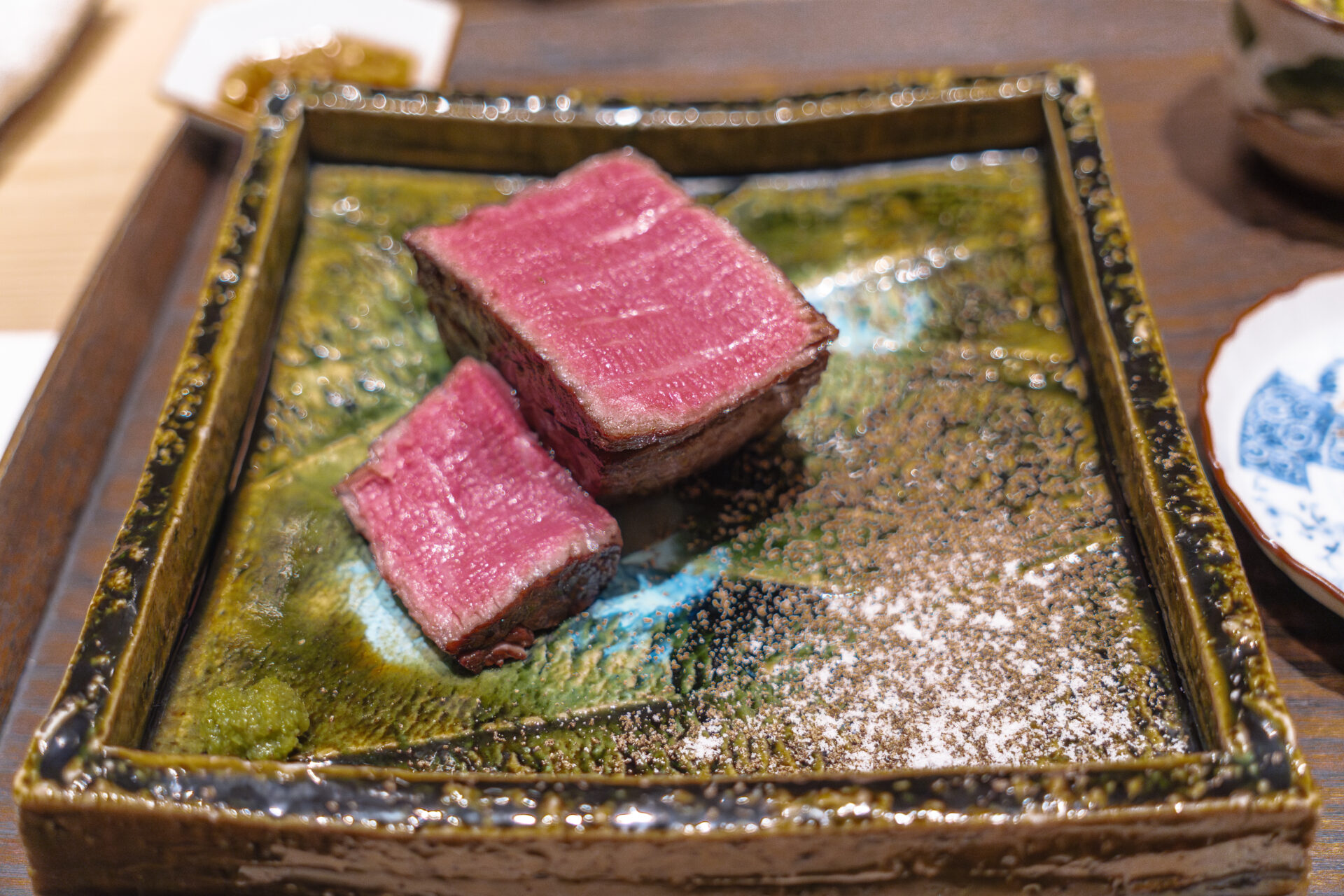
Sennichi Wagyu Sirloin with Tare, Served over Freshly Cooked Clay Pot Rice “Inochi no Ichi”
The climax: sirloin grilled in sweet soy tare, served atop steaming white rice.
Sennichi Wagyu sirloin is grilled to a savory finish, then coated in a glossy sweet-and-savory glaze.
Placed boldly over freshly cooked rice crowned with egg yolk, it’s a moment that heightens all the senses.
The melty fat, the bold tare, the creaminess of the yolk—all anchored by the fluffy rice, forming a trinity of bliss.
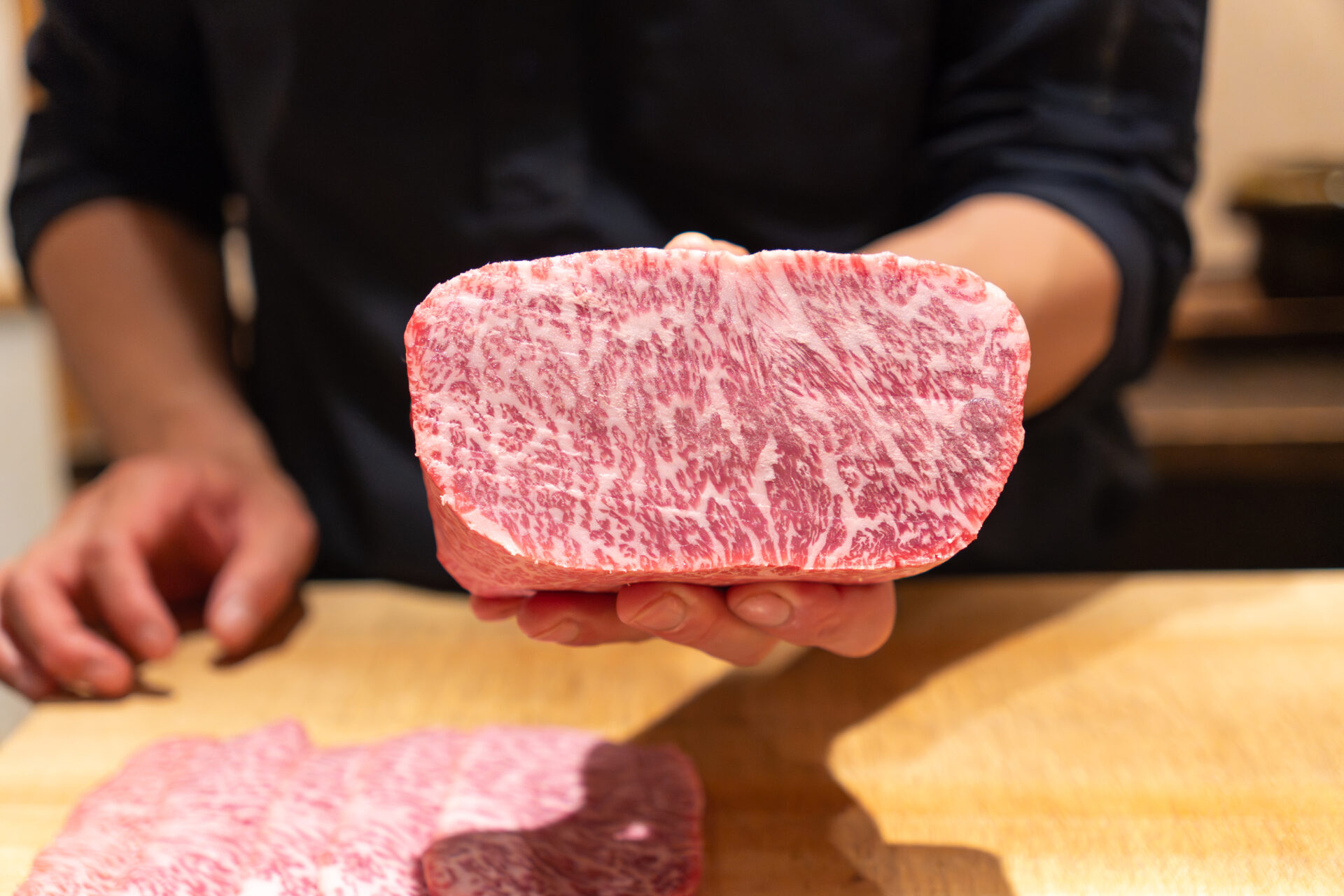
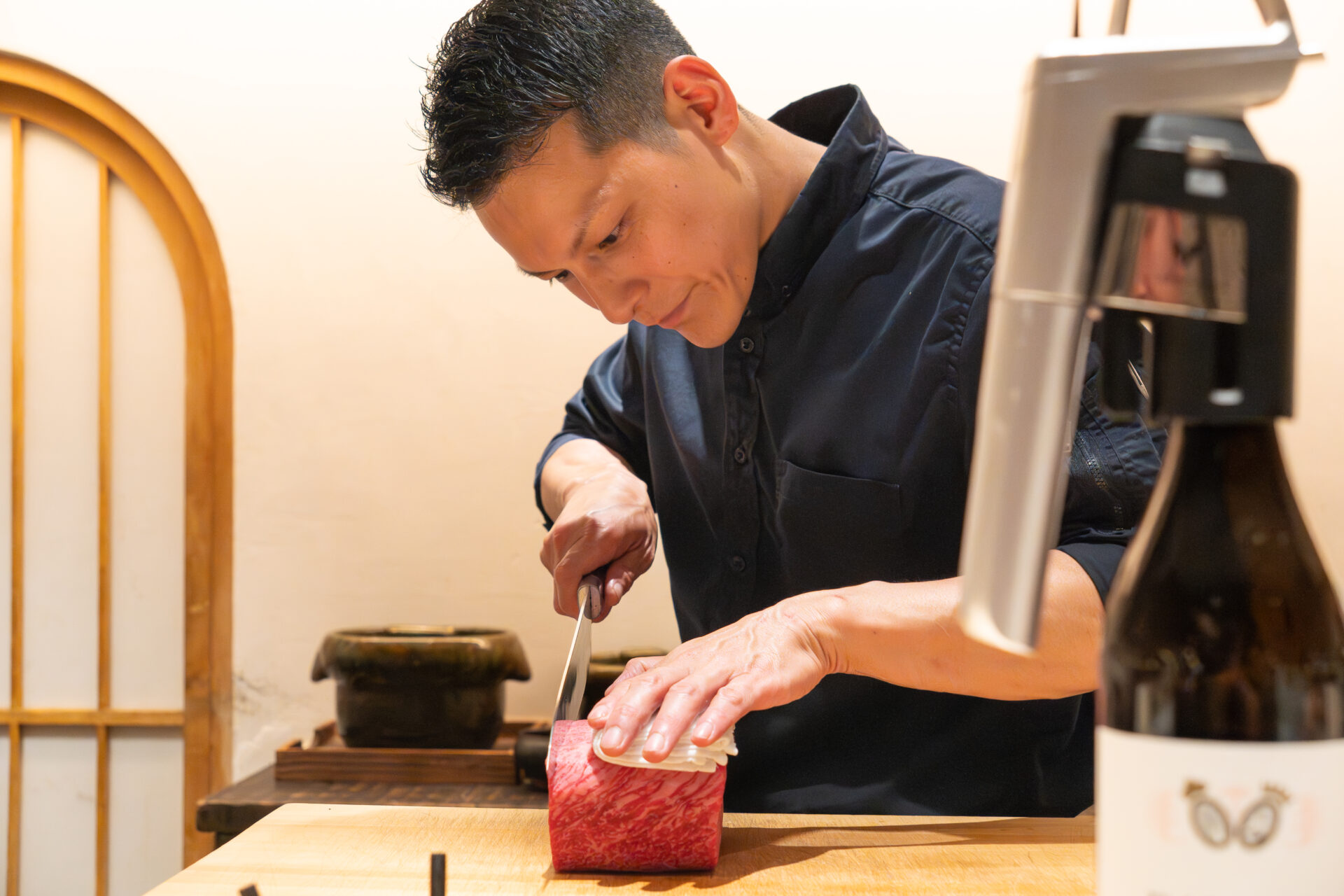
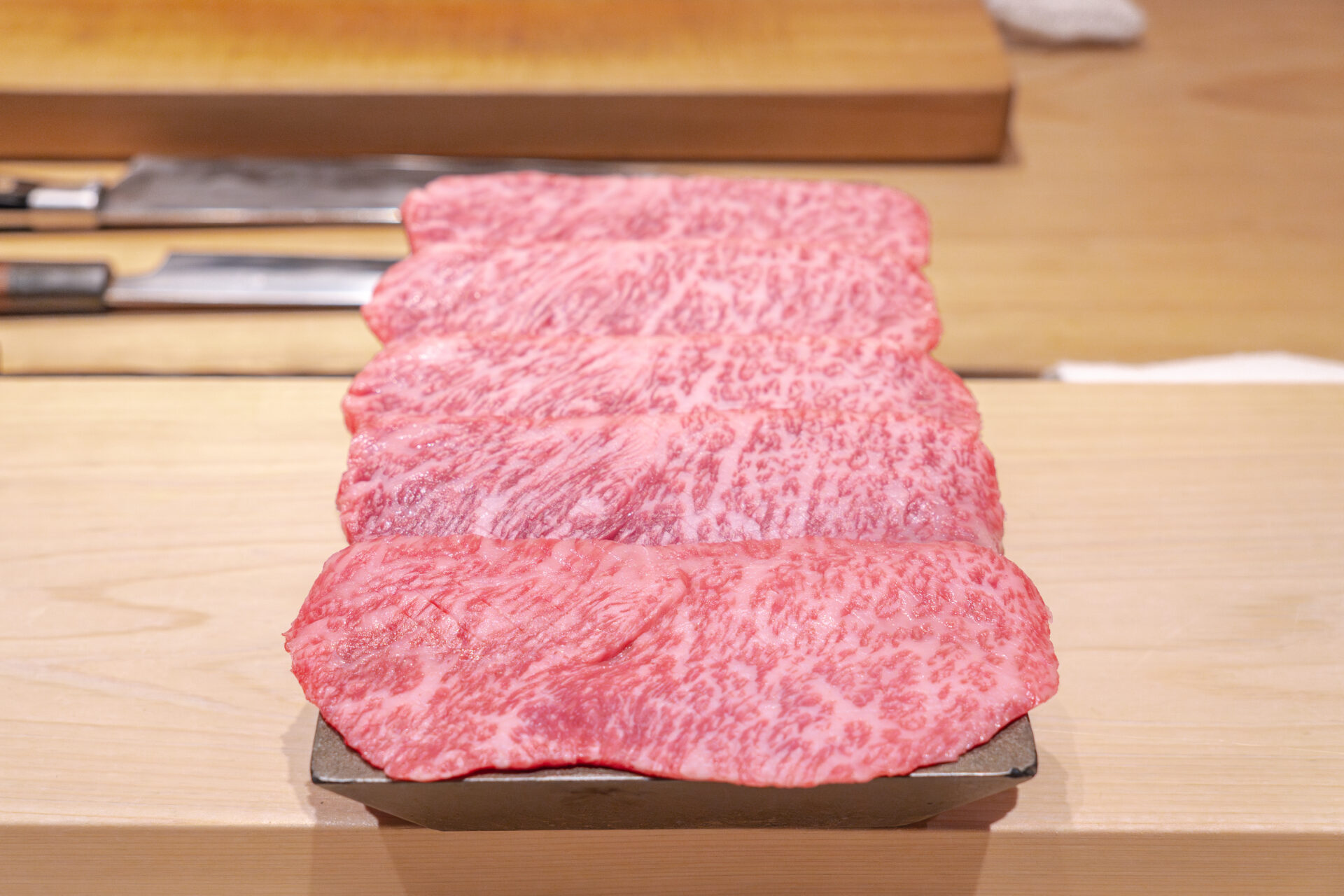
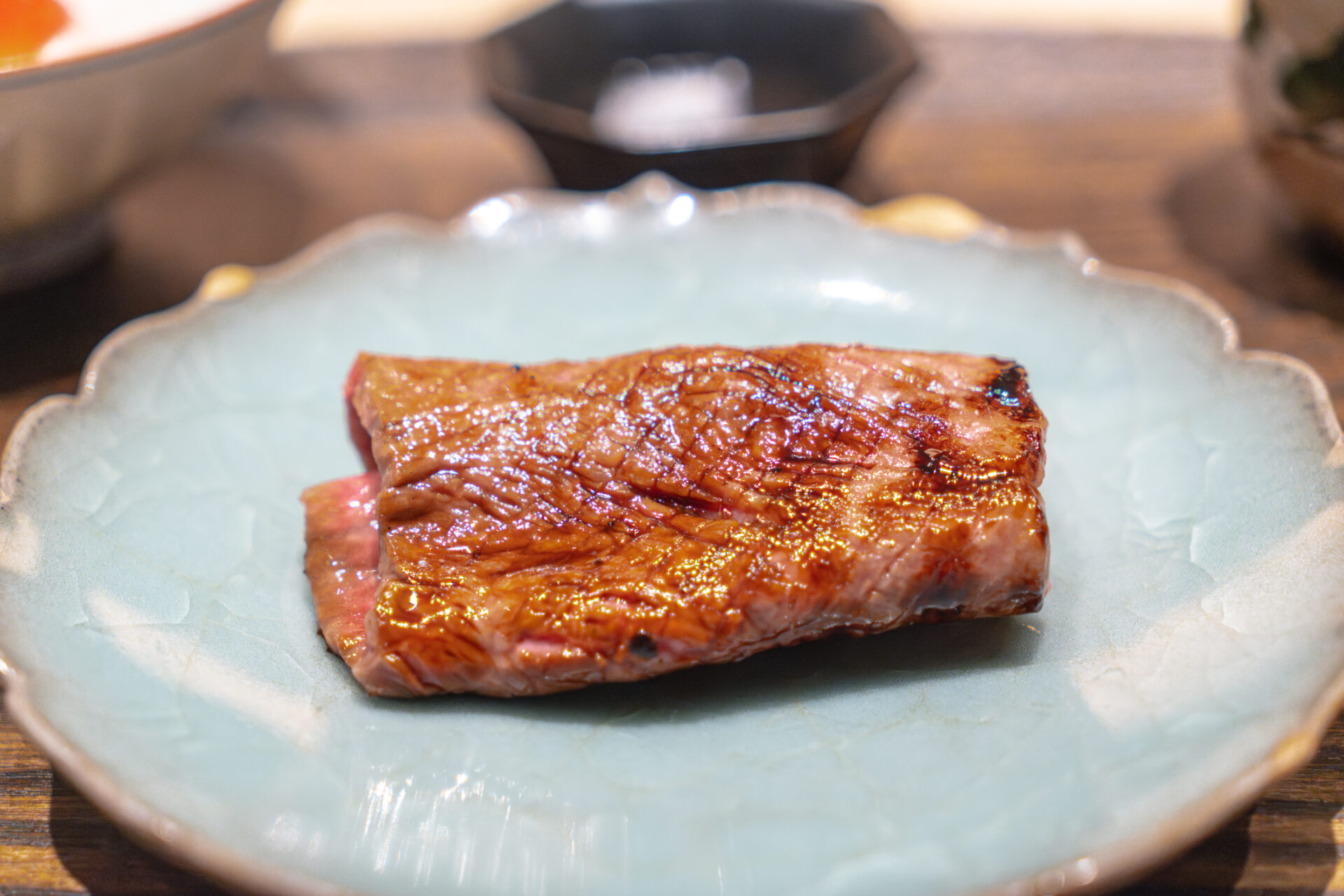
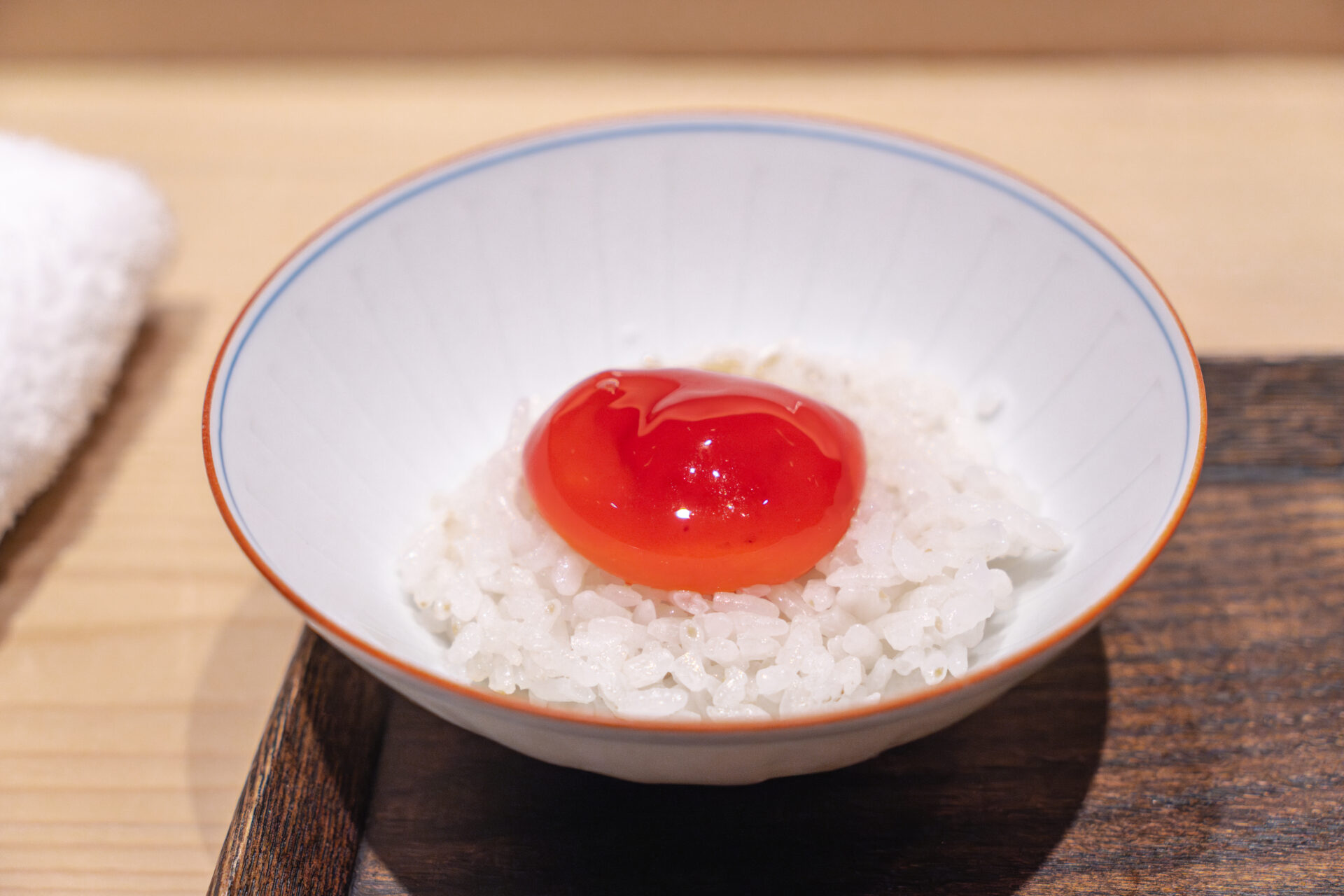
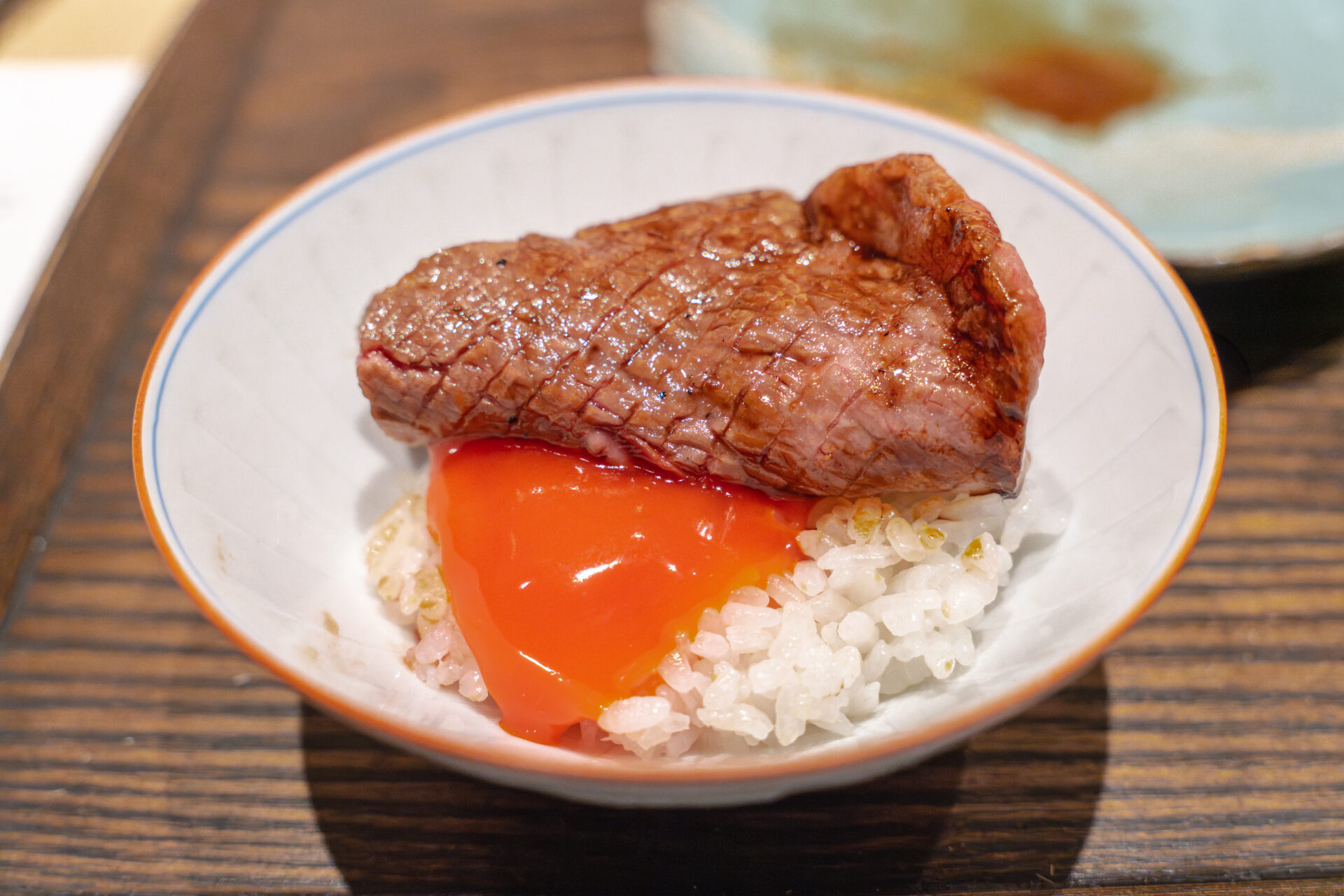
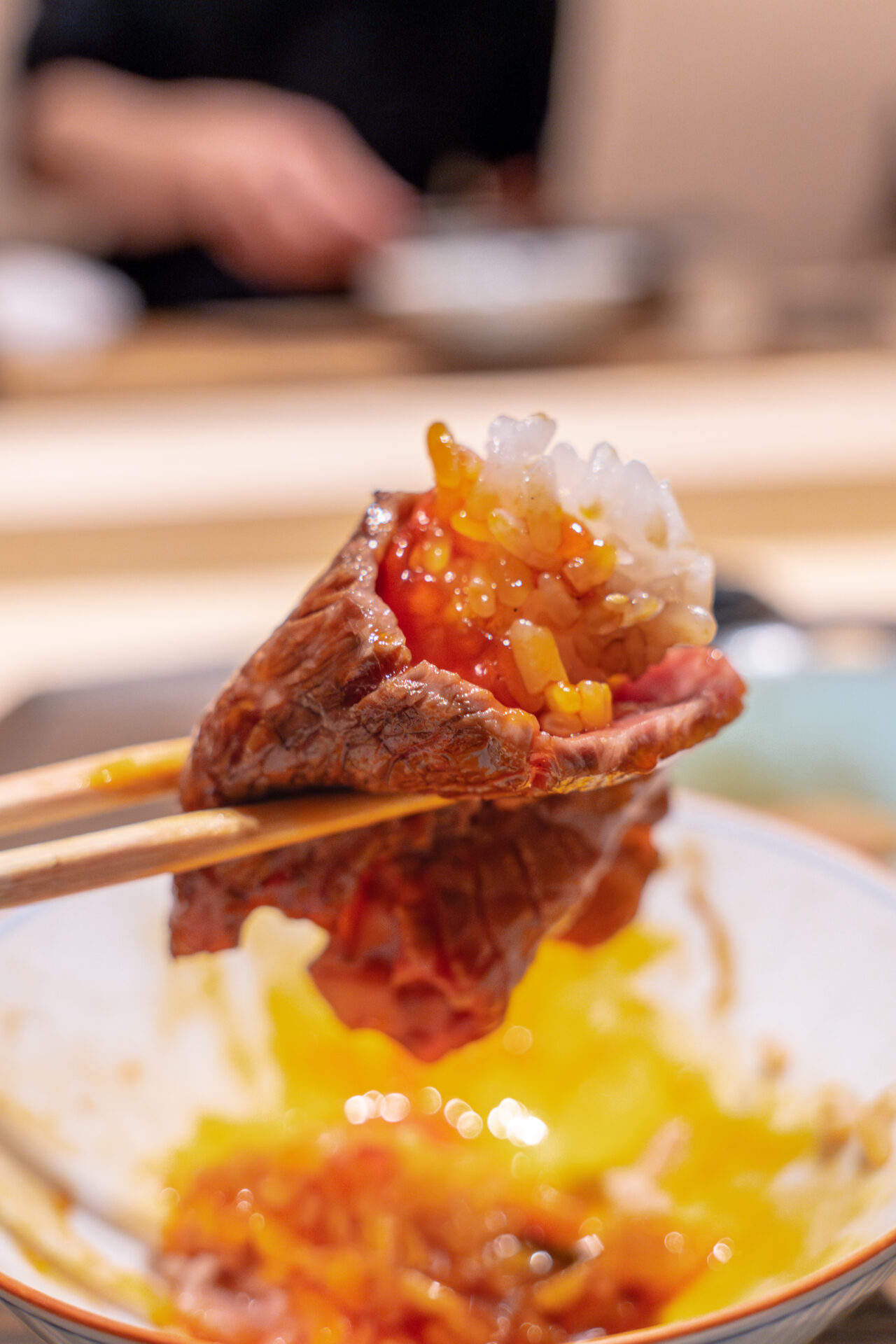
Homemade Cold Noodles with Wagyu Chili Oil
To close the savory course: house-made cold noodles with wagyu chili oil.
The oil is made by carefully extracting the essence of Sennichi Wagyu, resulting in a condiment that is not merely spicy, but deeply flavorful and aromatic.
The noodles’ cool slurp pairs perfectly with the rich, complex heat—leaving a lingering finish that honors the entire meal.
It’s hearty, yet somehow airy—a final dish that’s both satisfying and elegant.
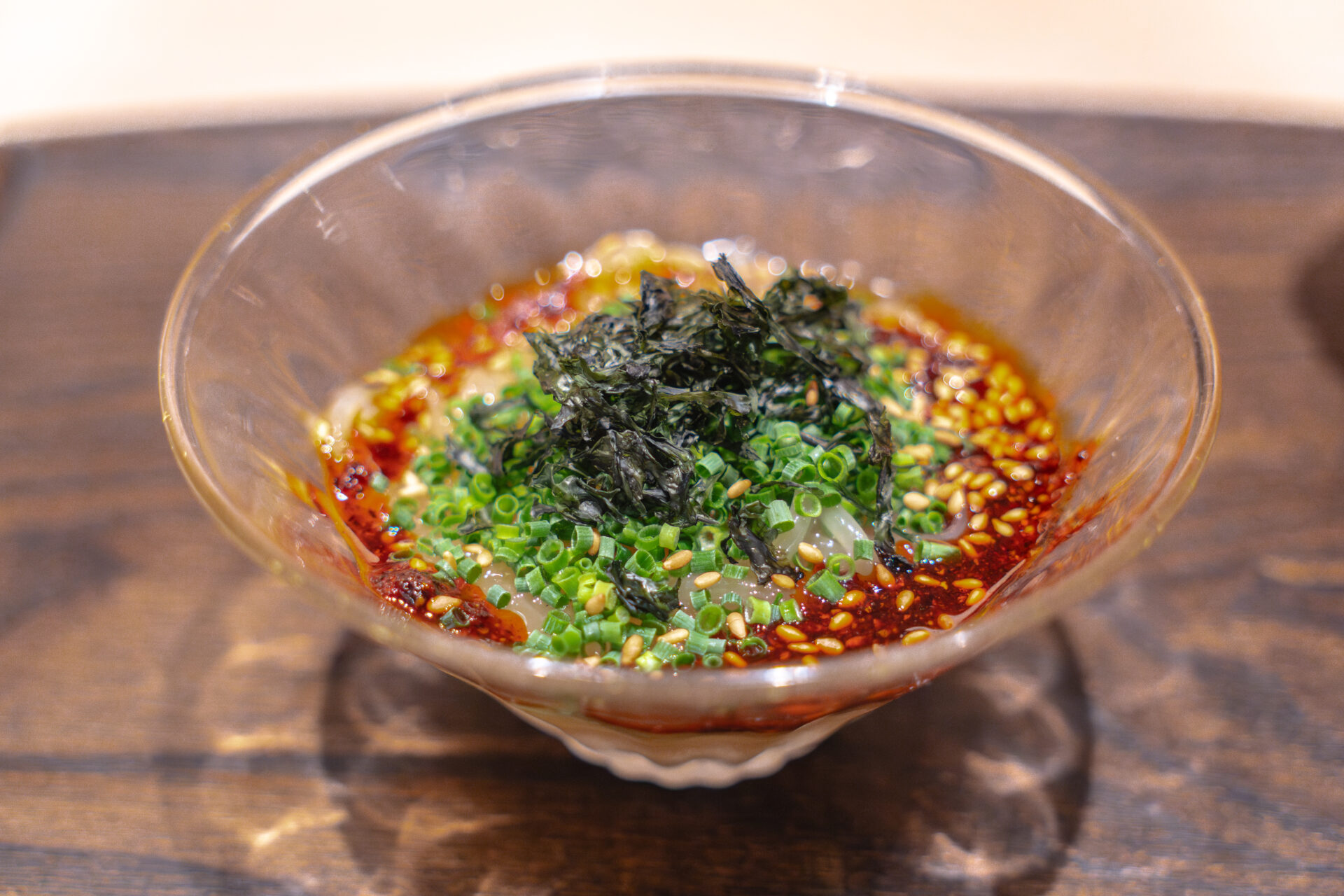
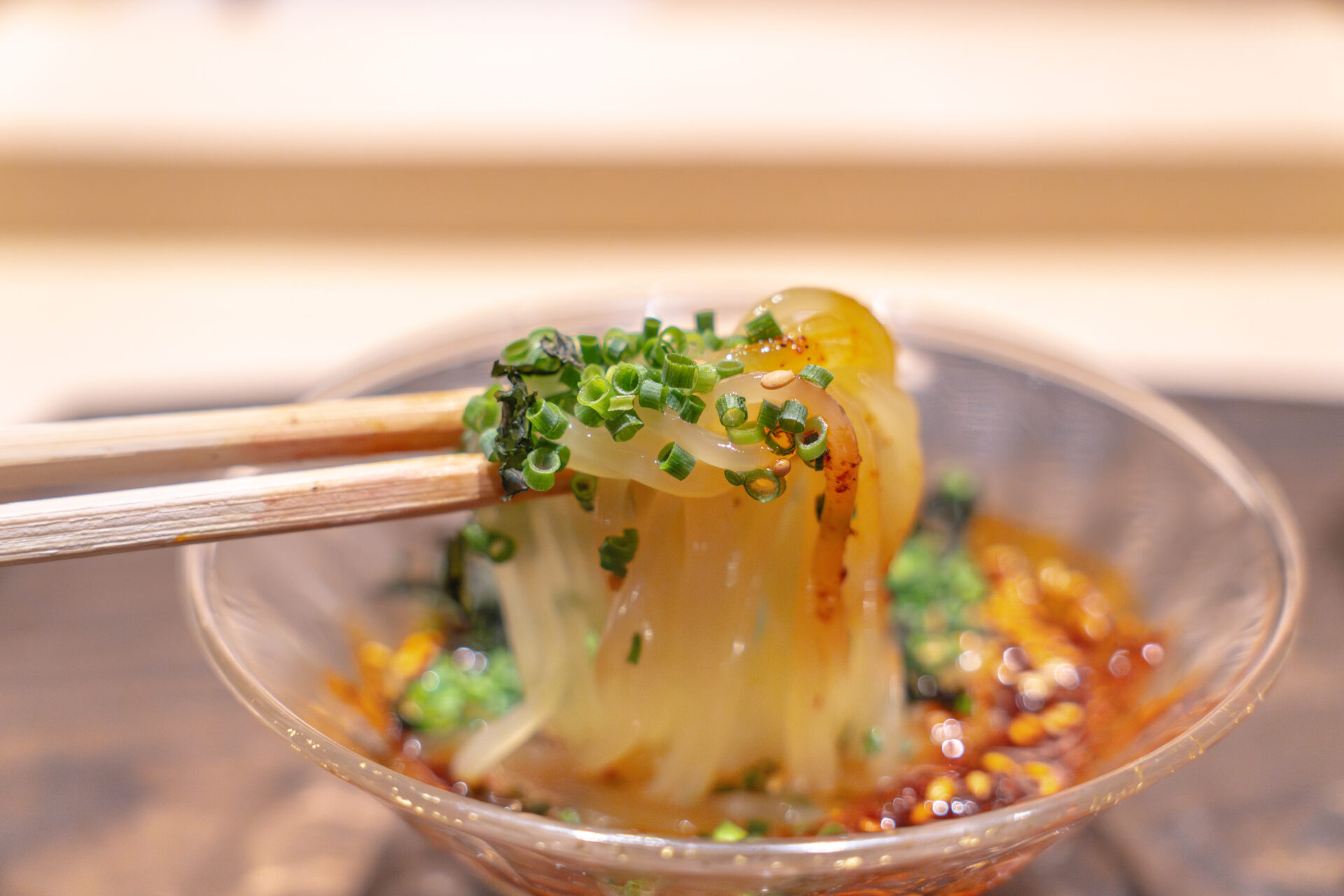
Dessert & Finale
Mango Tiramisu from Miyazaki Prefecture
The meal concludes with a mango tiramisu made using fruit from Miyazaki.
Lush, silky cream blends seamlessly with the natural sweetness and aroma of ripe mango.
Hidden layers of tangy and sweet fruit add contrast and clarity to the whole composition.
It’s a dessert that brings both satisfaction and refreshment—leaving a graceful afterglow to this luxurious yakiniku experience.
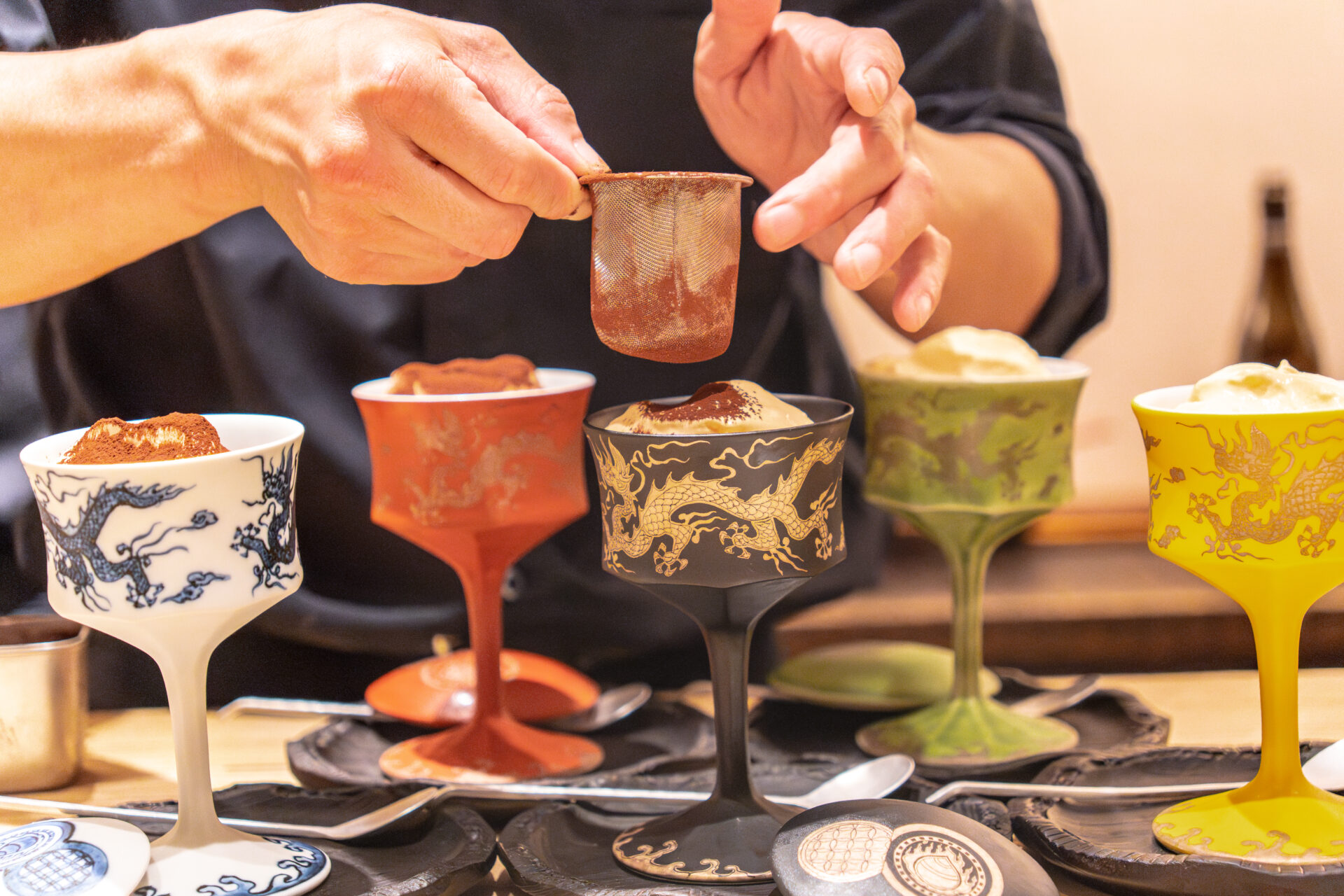
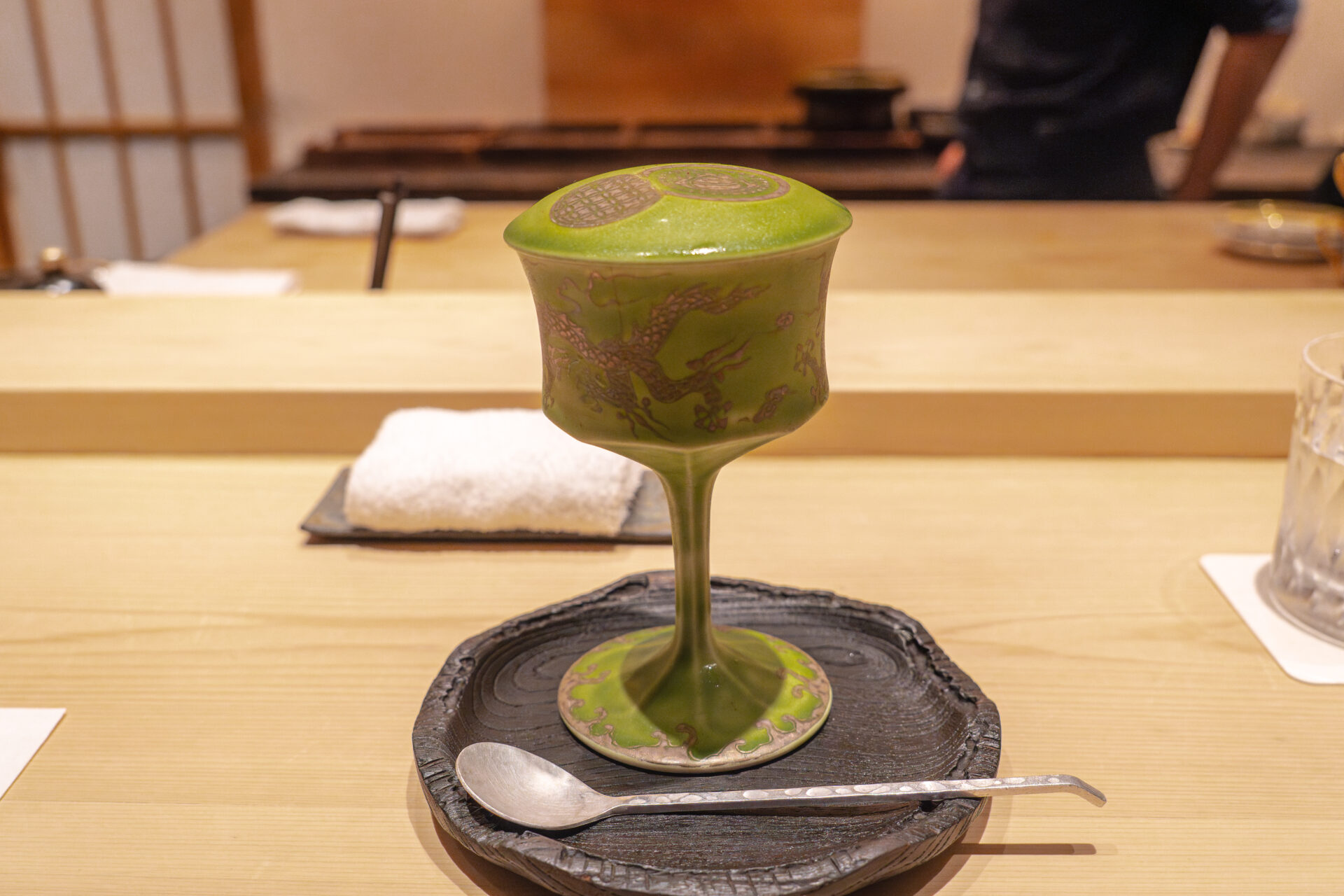
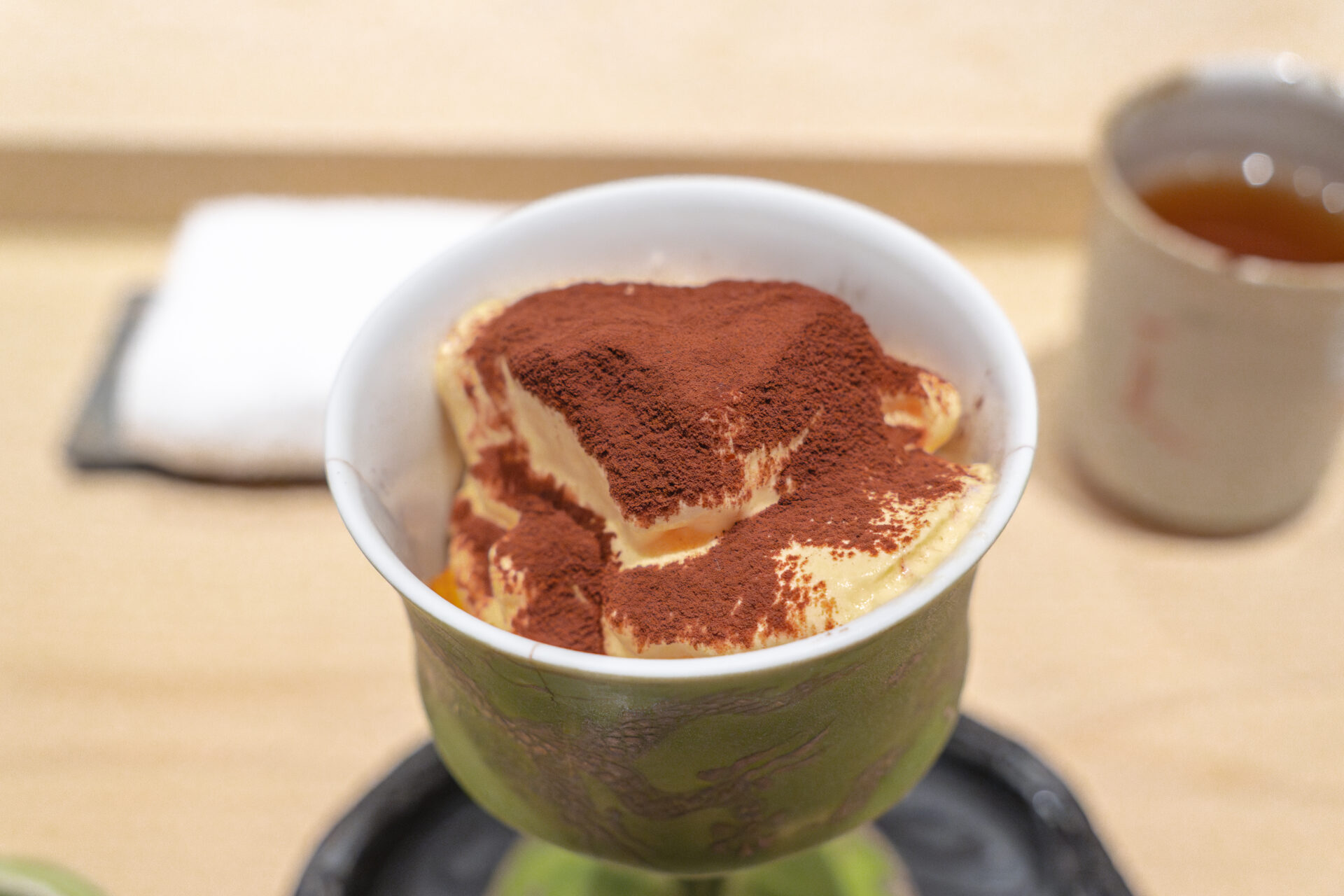
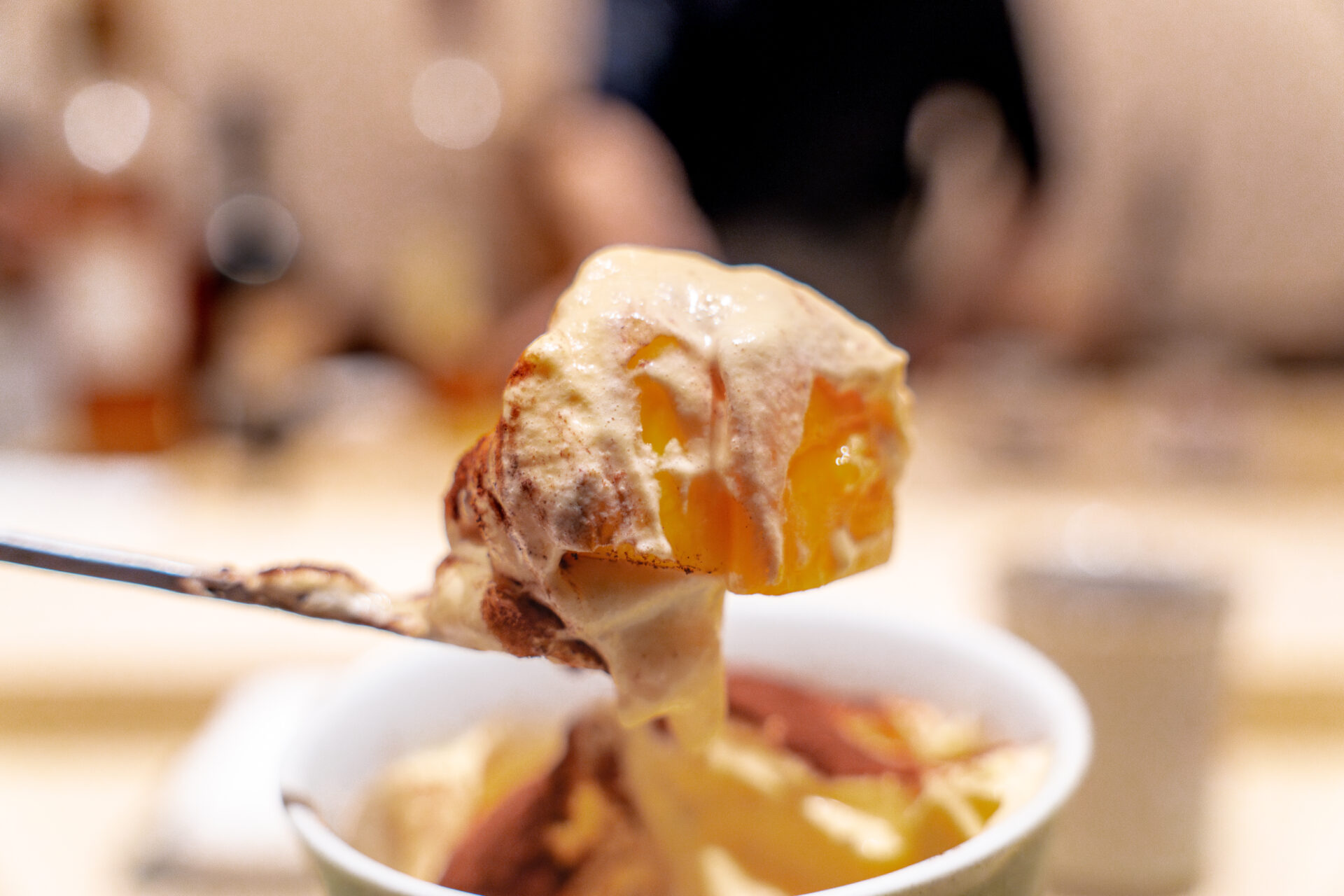
Reflection and Impressions
There is a quiet intensity in the air.
At Uramatsu, the word “yakiniku” no longer feels sufficient—it was not just a meal, but a complete experience.
The dishes were far more than a presentation of ingredients.
Aroma, temperature, thickness, texture, and aftertaste—
Every element carried a clear purpose. There was no excess, no coincidence.
Rather than passively consuming, the diner is drawn to listen, to feel, to engage all five senses.
What left the deepest impression was how the chef received the spirit of the producers and transformed it into something transcendent on the plate.
A life nurtured over a thousand days—treated with care and sincerity until the very final moment.
That mindset imbued each dish with a quiet strength.
To “grill” is not only a technique—it is a form of expression, and above all, a gesture of respect.
With each plate, Chef Hirakubo’s gaze carried more than culinary skill; it served as a bridge—connecting ingredient, chef, and guest.
The atmosphere here, the warmth here—these are things that can only be felt in this place.
It was a quietly moving evening, one that I will remember not just in taste, but in feeling.
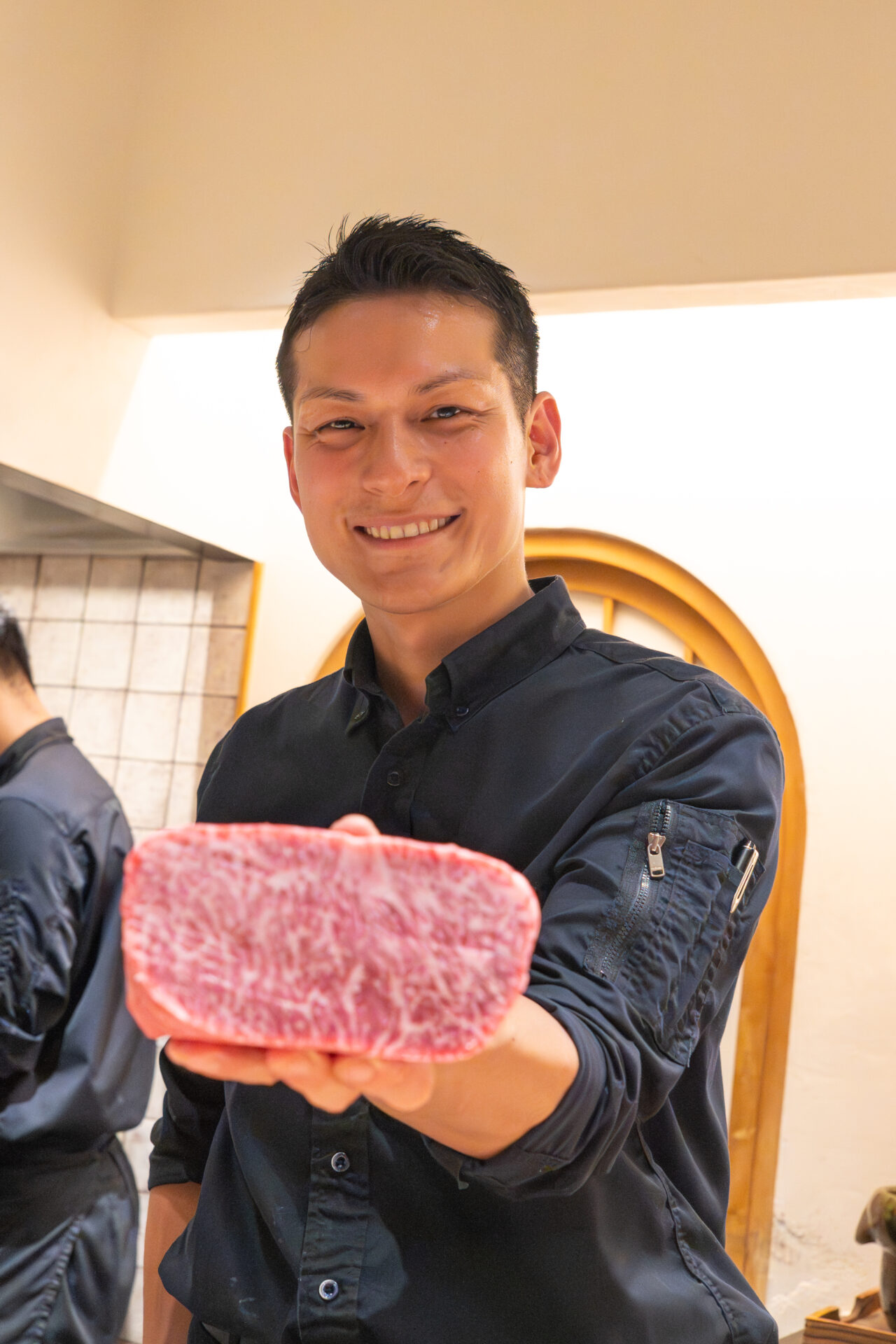
Reservations & Access Information
Access
Address:
LA・RES Nishi-Azabu B1F, 3-13-14 Nishi-Azabu, Minato-ku, Tokyo, Japan
Nearest Station:
6–11 minutes on foot from Exit 3 of Hiroo Station (Tokyo Metro Hibiya Line)
How to Reserve
Reservations are accepted through multiple platforms, including:
Ikkyu.com, OMAKASE, Retty, TableCheck, and PayPay Gourmet.
Phone reservations are also available:
📞 03-6459-2329
-
A 10% service charge will be added to the bill.
-
Cancellation Policy:
-
Same-day / 1 day prior: 100%
-
2 days prior: 50%
-
Business Hours / Days Open
-
Hours: 17:00–23:00 (Last order 22:30)
-
Closed: Only during New Year’s holidays
Seating Capacity
Approximately 60 seats, including table seating, box seating, and private rooms.
Uramatsu (Counter Dining)
Hidden behind a concealed door beneath Ushimatsu, Uramatsu is an exclusive 7-seat counter dining space.
Open only four days a week (Tuesday–Friday), this is where Executive Chef Tatsuro Hirakubo personally curates a theatrical meat experience right before your eyes.
While not strictly by referral only, Uramatsu is currently fully booked and does not offer regular monthly reservation releases.
Reservations are made available only when cancellations occur, and are announced exclusively via the OMAKASE reservation page.
To secure a seat, it is recommended to create an OMAKASE account and monitor for last-minute availability notifications.
▶︎ Uramatsu Reservation Page (OMAKASE)
-
Cancellation Policy:
-
7 days prior: 30%
-
4 days prior: 50%
-
1 day prior or same day: 100%
-
-
Open Days: Tuesday–Friday
-
First seating: 17:30〜
-
- TAGS

